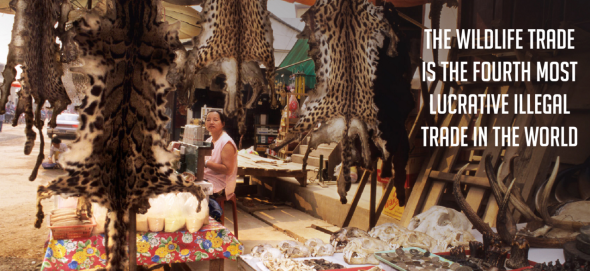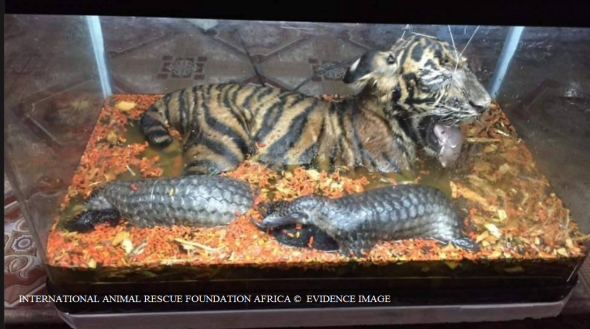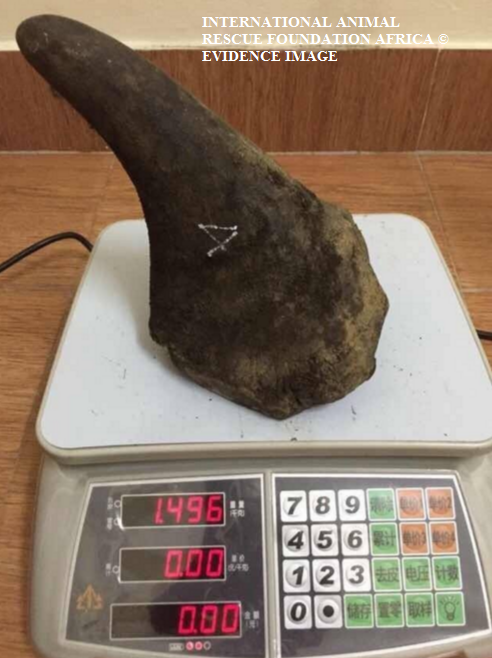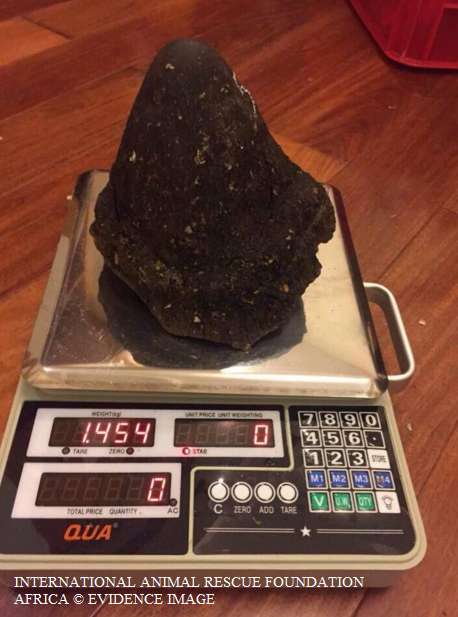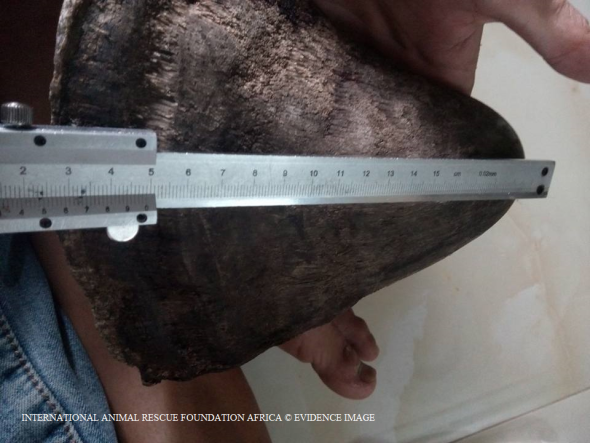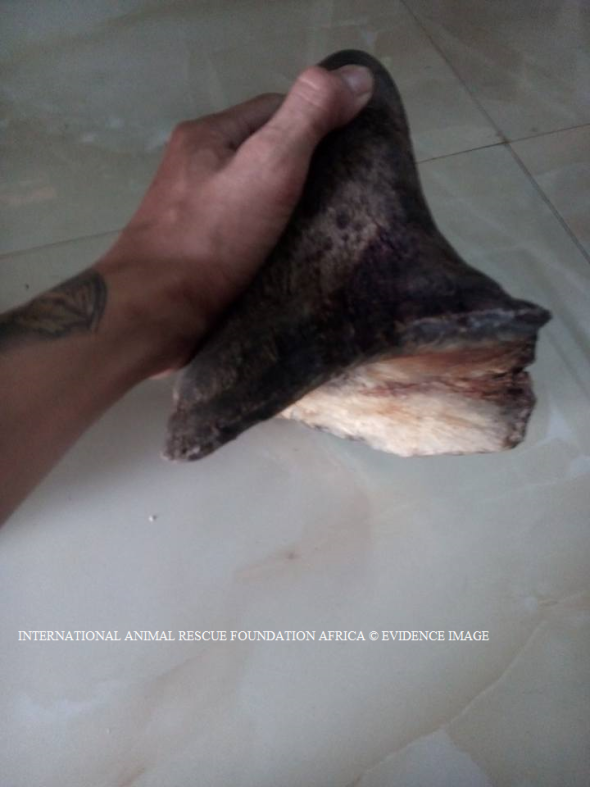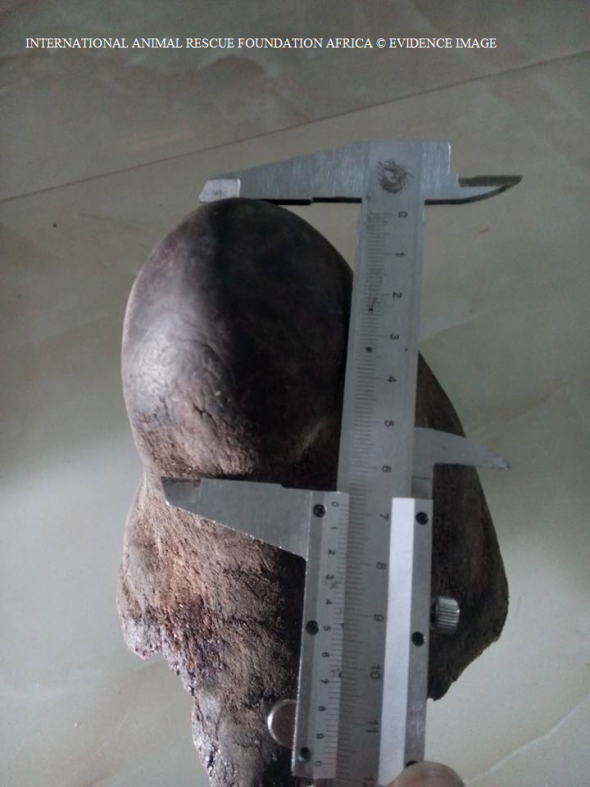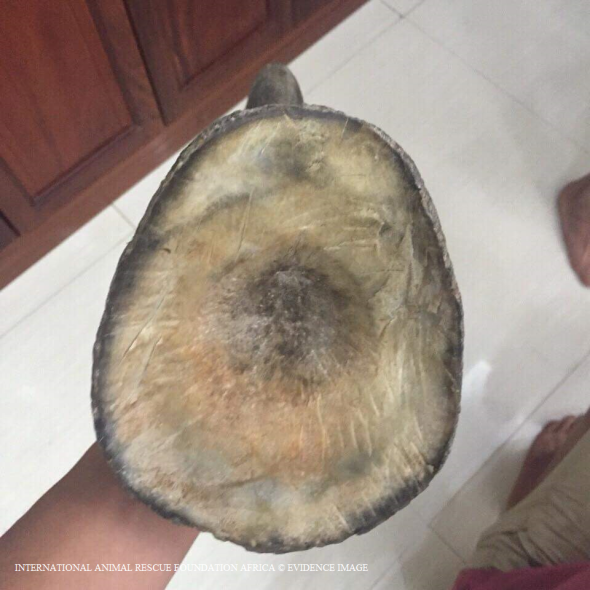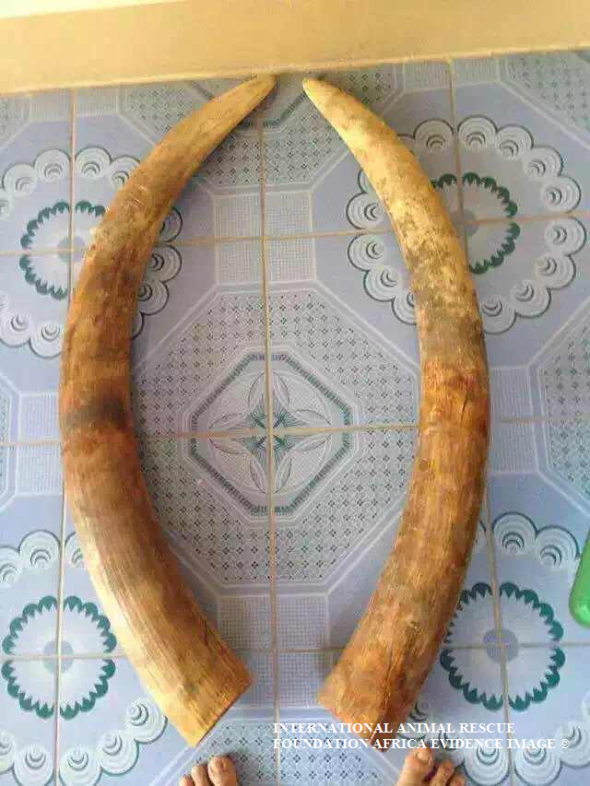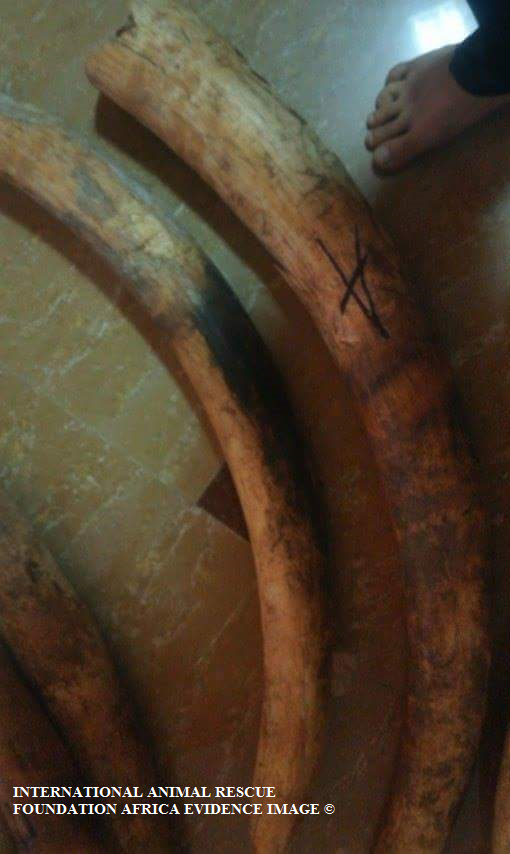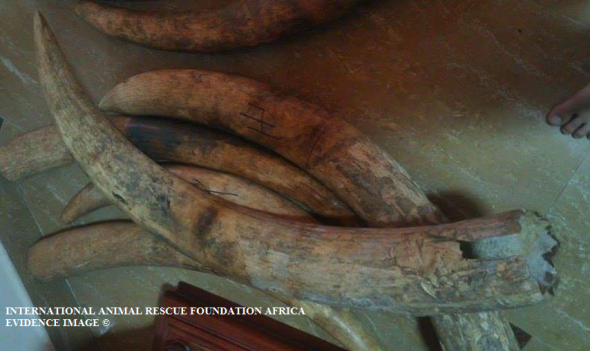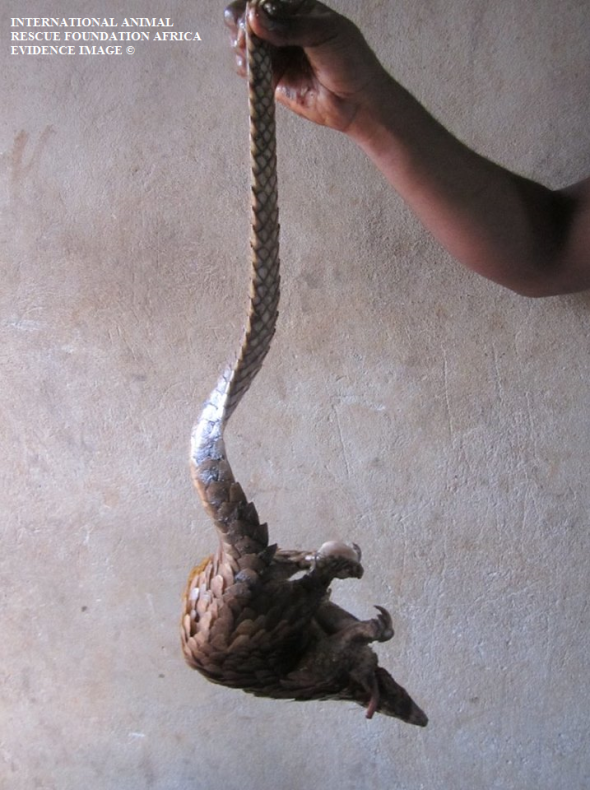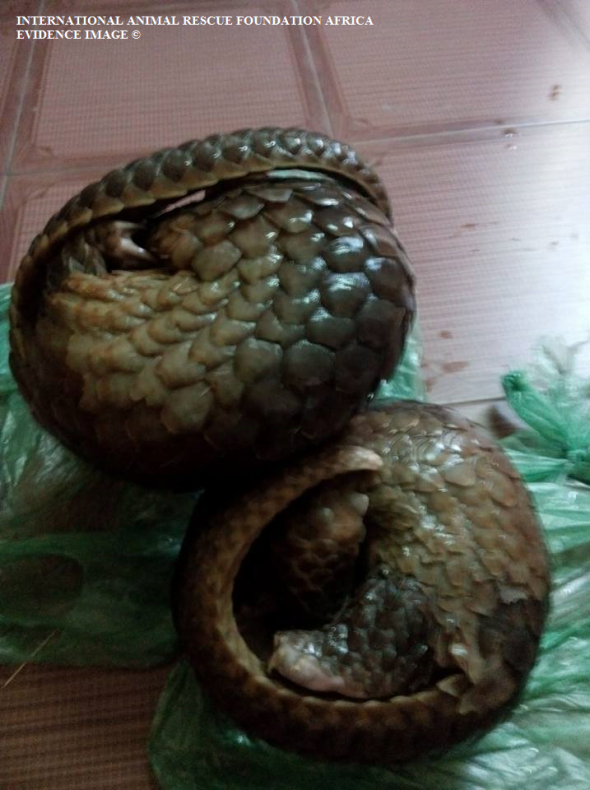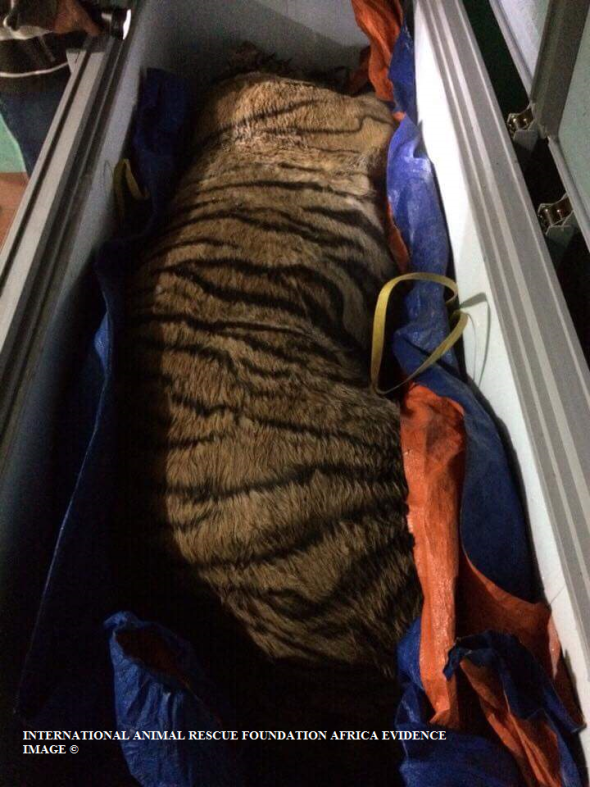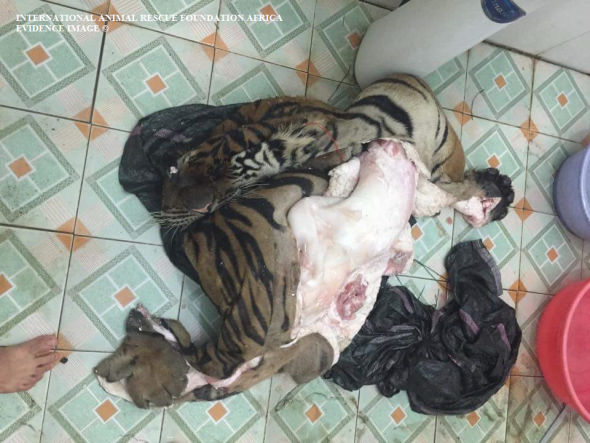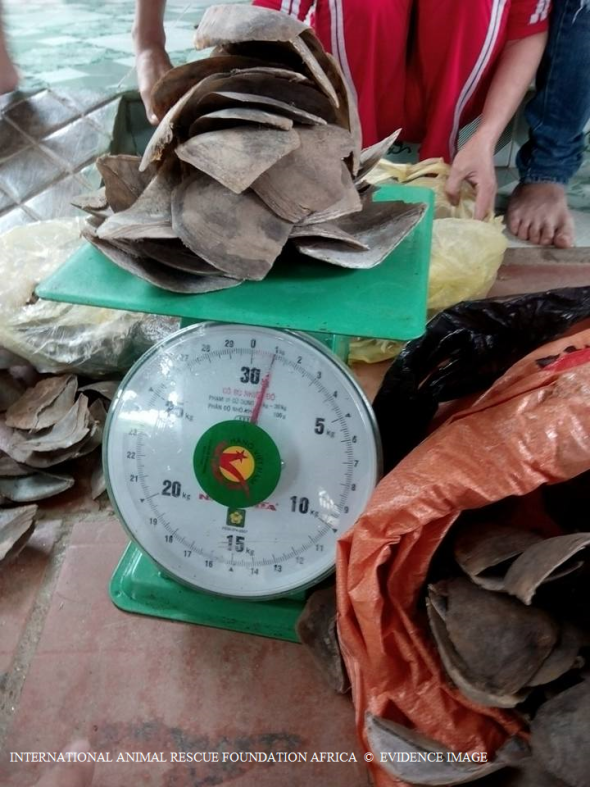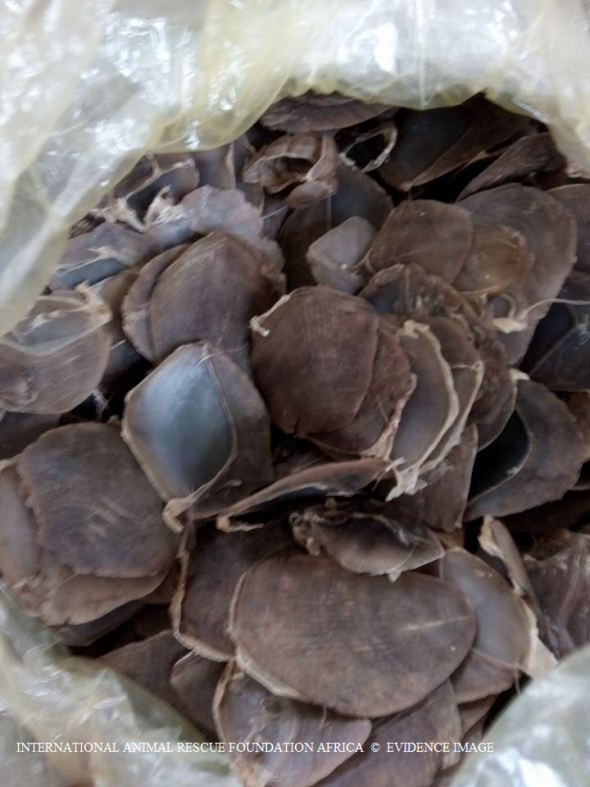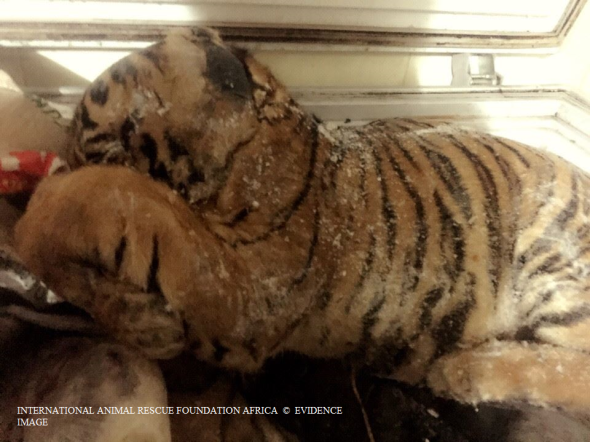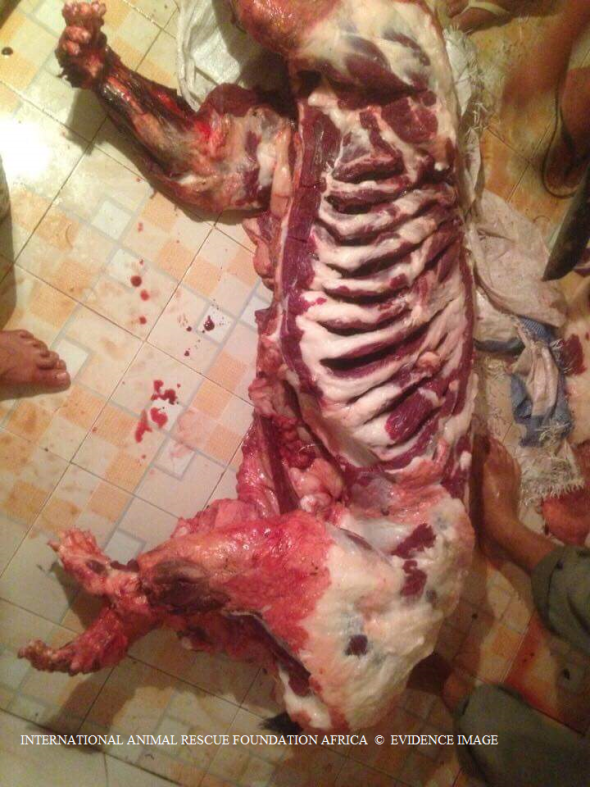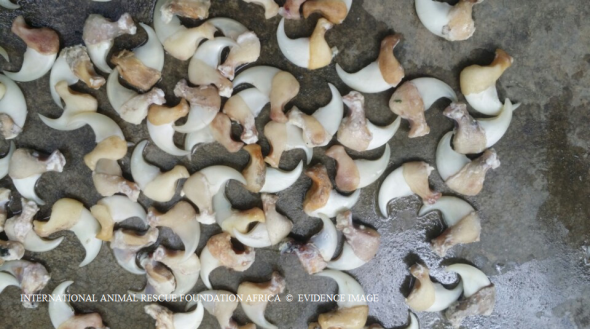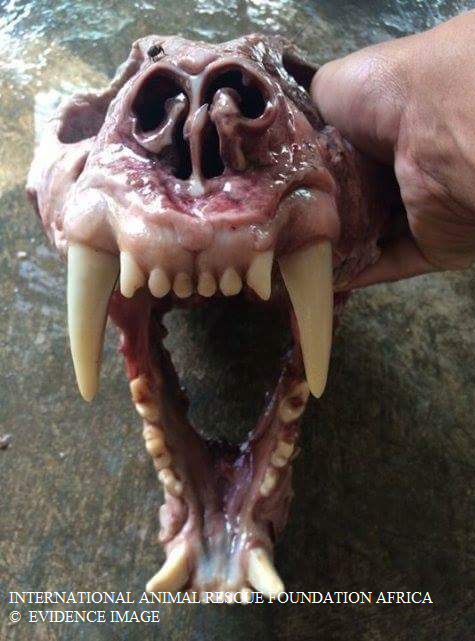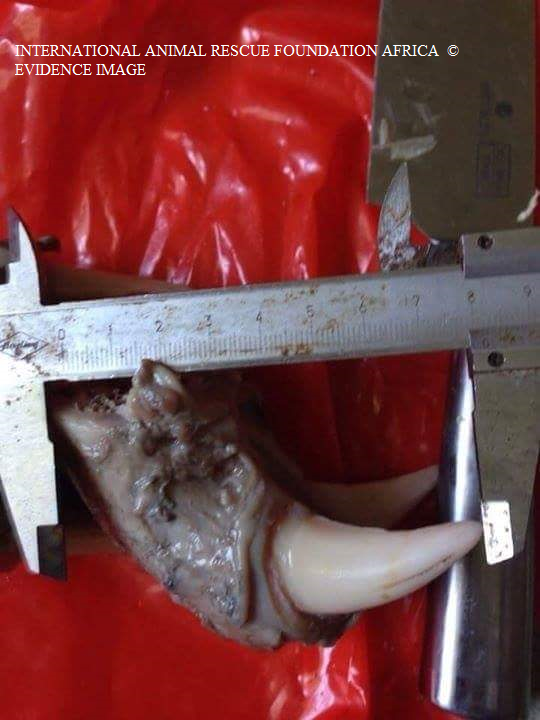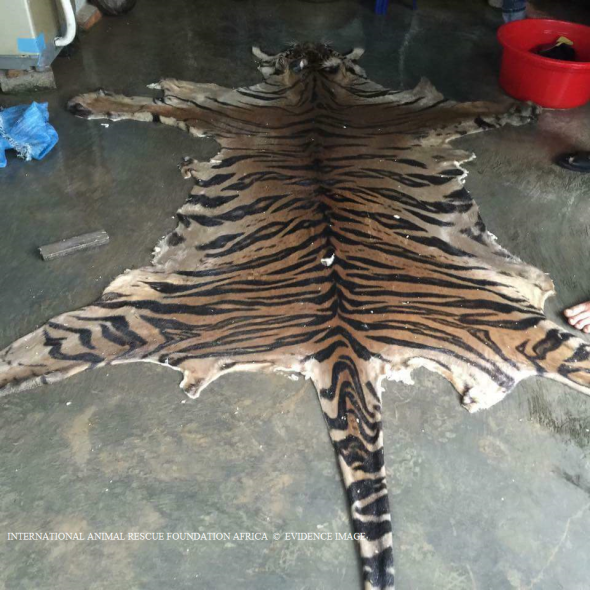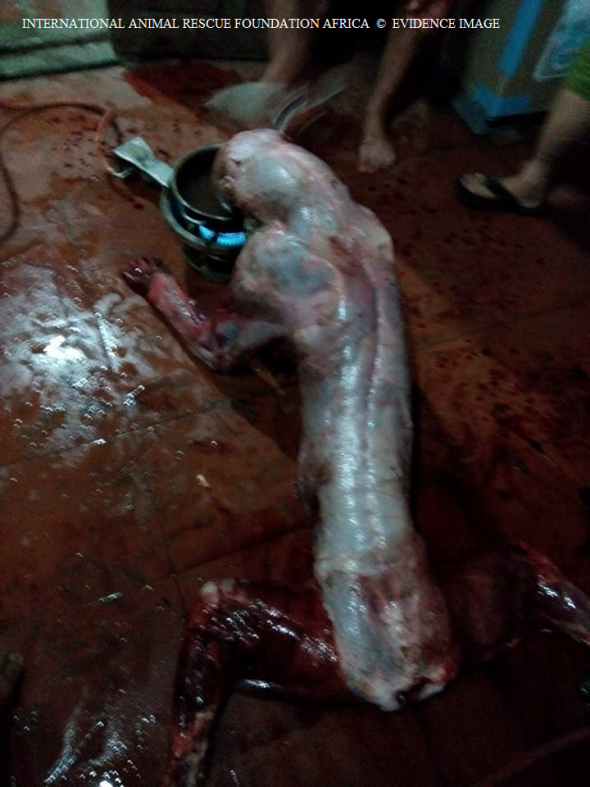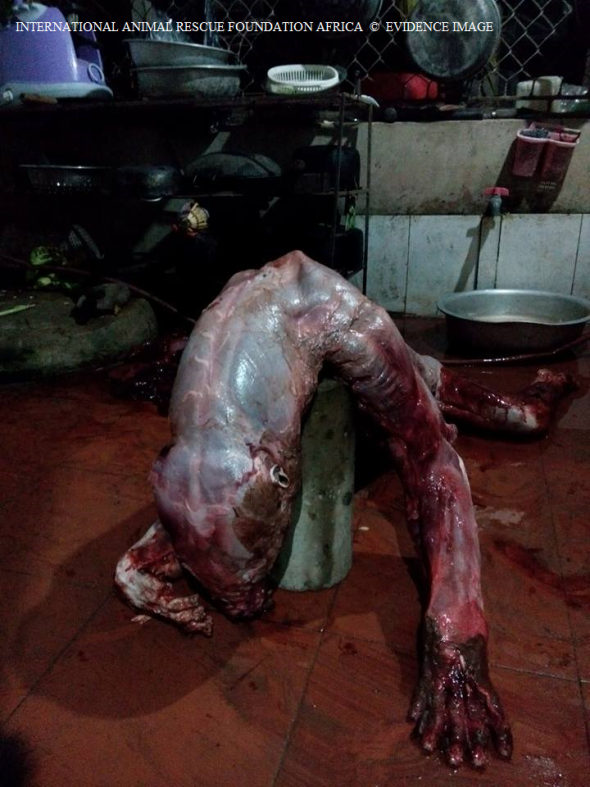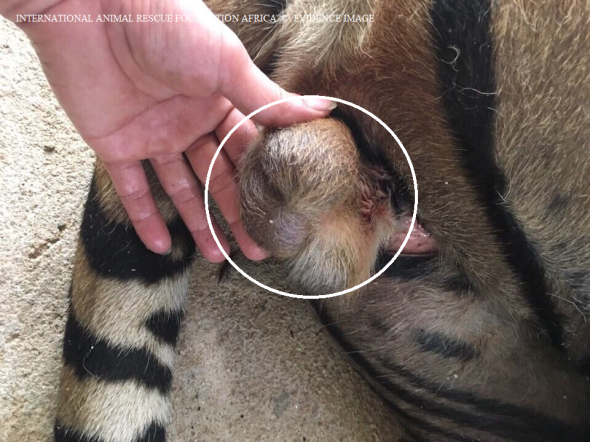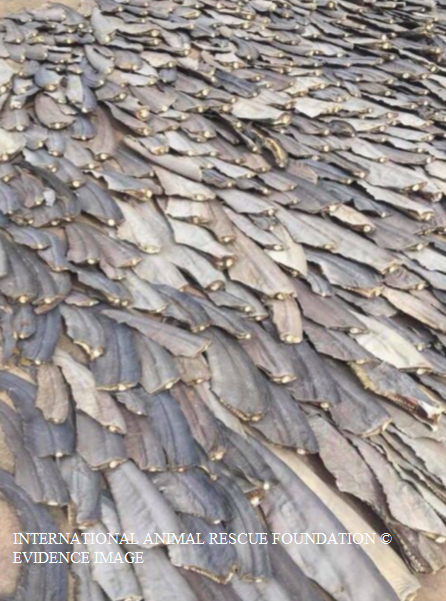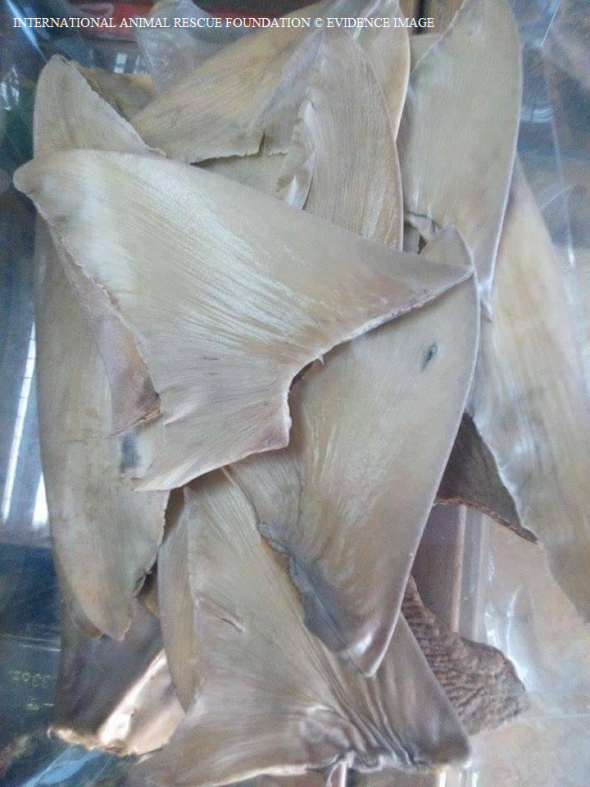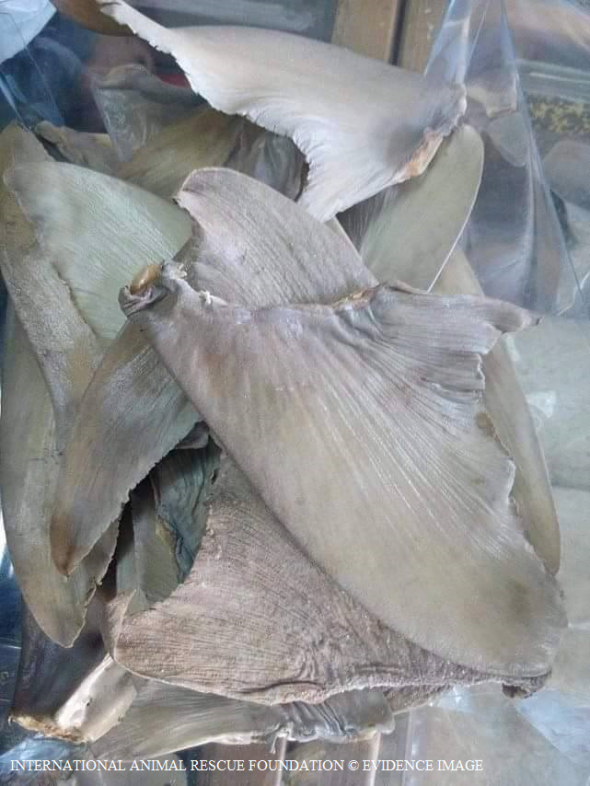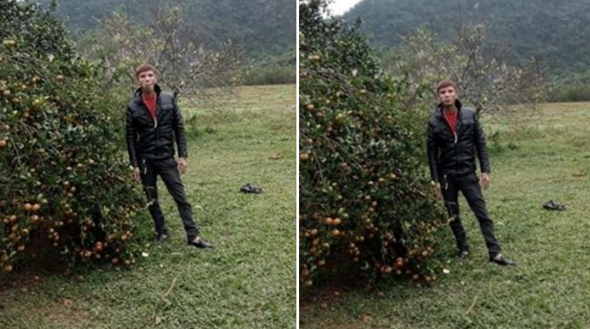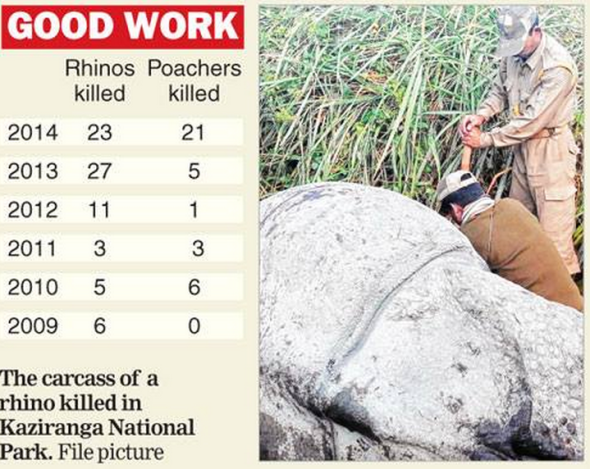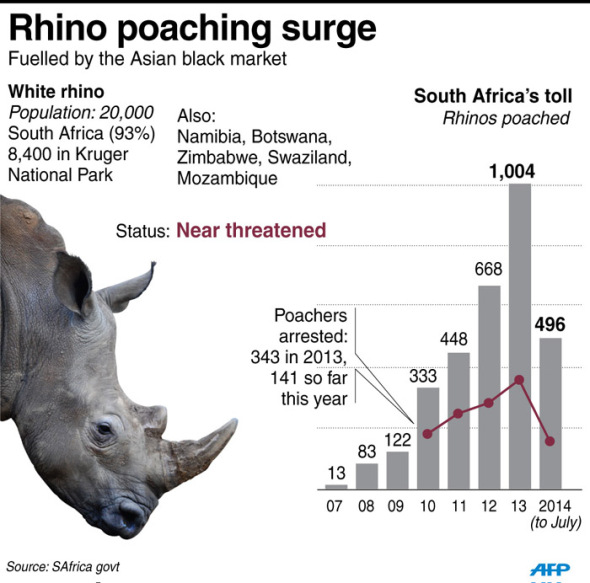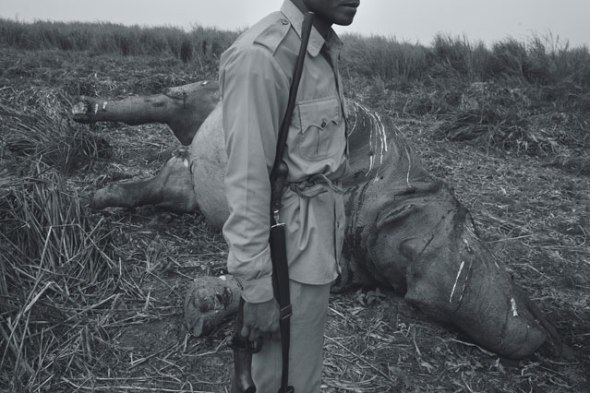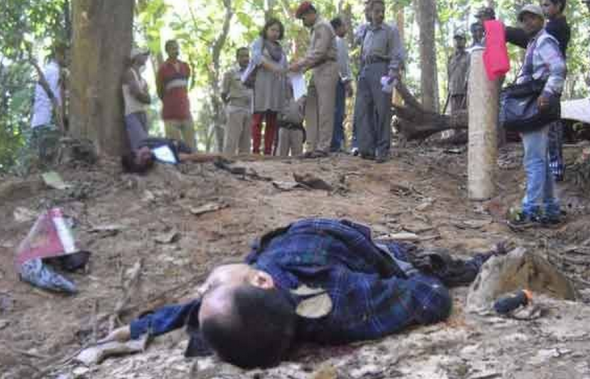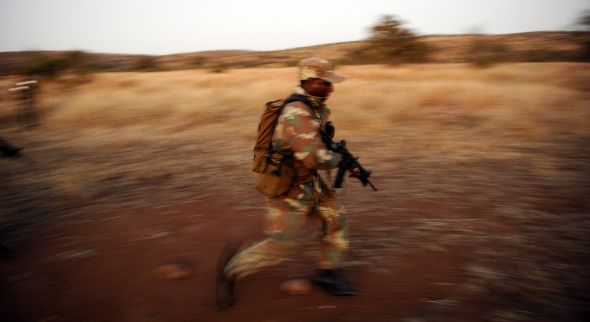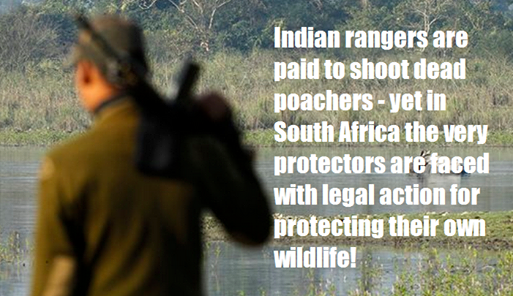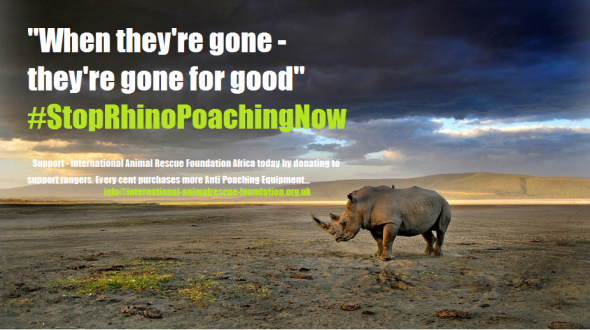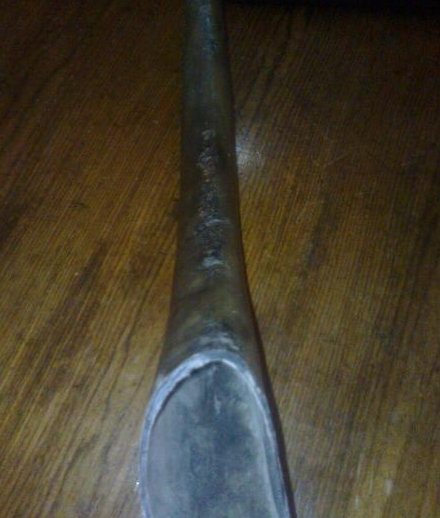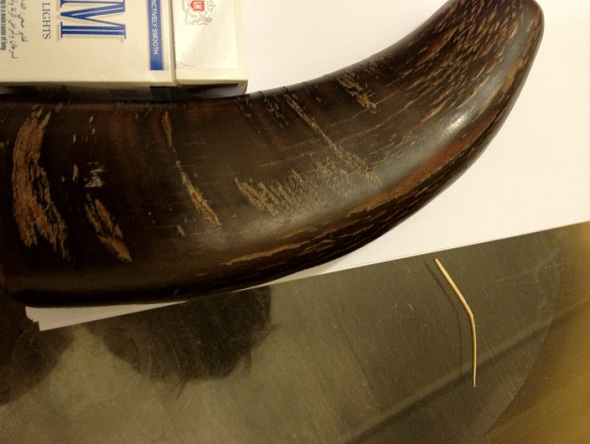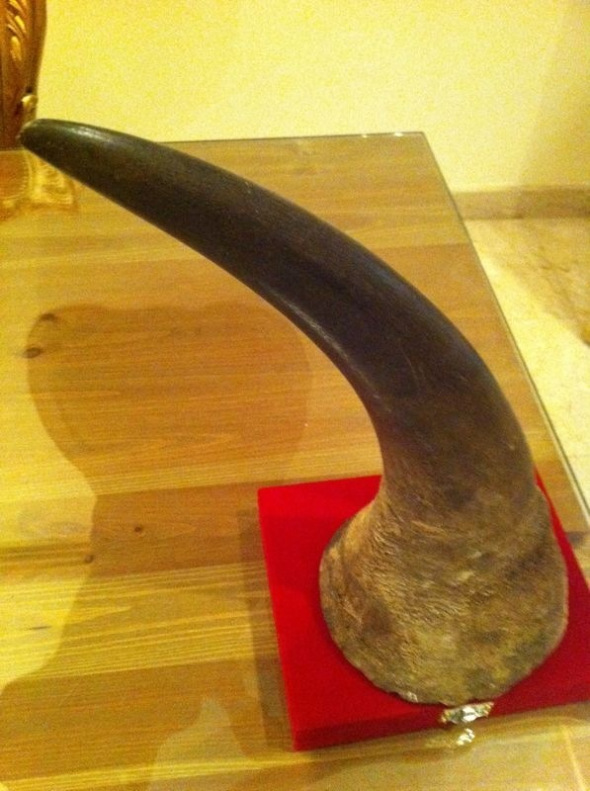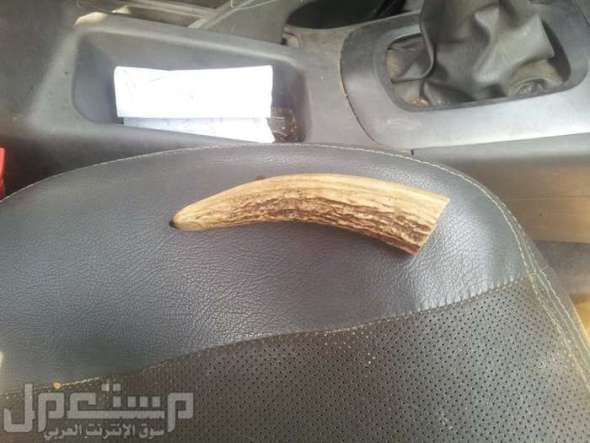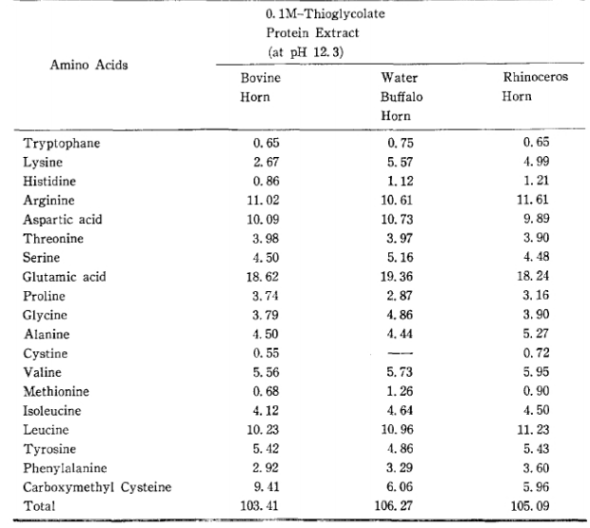Endangered Species Friday | Bubalus mindorensis | Asia’s Next Extinction!
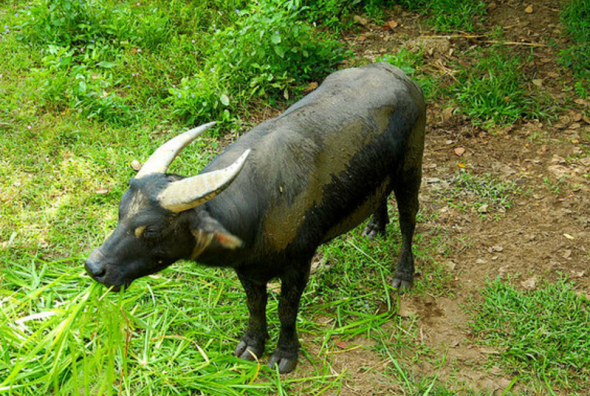
Endangered Species Friday | Bubalus mindorensis
This Friday’s (ESP) Endangered Species Post, I’m touching on a very undocumented species of buffalo that is so endangered - its extremely likely the species will go extinct within the next ten years maximum. (Photographer unidentified).
Listed as (critically endangered) the species was primarily identified back in 1888 by French born Dr Pierre Marie Heude (25 June 1836 – 3 January 1902) whom was a French Jesuit missionary and zoologist. Born at Fougères in the Department of Ille-et-Vilaine, Heude became a Jesuit in 1856 and was ordained to the priesthood in 1867. He went to China in 1868. During the following years, he devoted all his time and energy to the studies of the natural history of Eastern Asia, traveling widely in China and other parts of Eastern Asia.
Endemic to the Philippines B. mindorensis first came to the attention of environmentalists when conservationists began studying the Mindoro Water Buffalo in the early 1940’s of which they found insufficient data relating to the species. Unfortunately from 1986-1996 the species was then suddenly re-listed as (endangered).
Yet the Tamaraw had been known to overseas and native conservation scientists for over THIRTY YEARS of which today we’re now seeing a possible new extinction occurring within the Philippines. How is this possible, when scientists knew about the status of the species, why hasn’t a single zoo removed small populations to house in protective breeding captivity for later reintroduction into the same habitat, or new pastures?
Meanwhile from the year 2000 to 2008 the species was again (re-listed from endangered to critically endangered). Today the Tamaraw is now bordering complete extinction within the wild, and from what we know there is ‘possibly’ no protective captivity projects anywhere around the globe to preserve the species for future reintroduction in the wild. We do hope that we’re wrong?
From what we know based on the last census from 2013 (three years ago) there was noted within the wild only 105 mature individuals remaining. This equates to exactly 105-210 mature individuals (estimate). Within the past three years its very likely we have probably lost half of the remaining populations known, which could mean there is only 52-205 mature individuals remaining within the wild to date.
The species is not known to be fragmented, however populations are still declining. The major threat was once identified as hunting, although ‘allegedly’ isn’t known to be a threat now?. As a scientist and environmental crime CEO I find this very difficult to comprehend, due to the amount of horned ungulates which are being located throughout South East Asia. I must state though: my environmental crimes officers as yet haven’t located any Tamaraw horns or trophy heads.
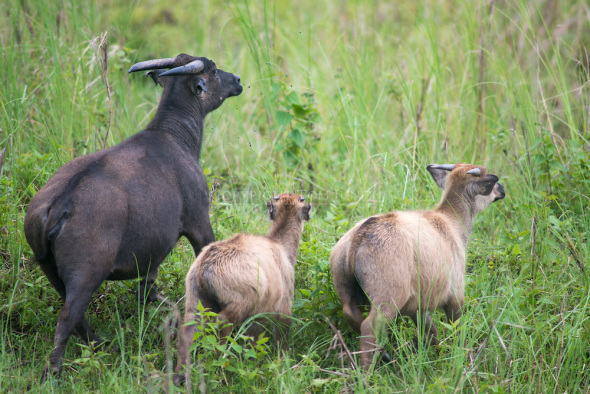
Image: Tamaraw. Credits: Ruisu Fang.
Formerly, Tamaraw were found across the whole of Mindoro from sea level to the high peaks (to over 1,800 m), inhabiting open grassland or forest glades, thick bamboo-jungle, marshy river valleys, and low to mid-elevation forests. The species is currently confined to a few remote areas over 200 m, and is most often recorded in secondary forest and mixed forest/grassland.
Tamaraw are largely solitary, although females occur with offspring. Males and females occasionally associate temporarily throughout the year, which is similar to other bovines species, such as African buffalo, banteng and gaur. The solitary nature of the species is probably an adaptation to forest habitats, where large groups would prove to be a hindrance. Tamaraw feed primarily on grasses, as well as young bamboo shoots, in open grasslands, resting within tall grasses or dense forest. Although formerly diurnal, Tamaraw have become largely nocturnal due to human encroachment and disturbance.
“WE’RE LOSING THEM, AND FAST”
I do find it quite disheartening to know that the Philippines “national animal symbol” isn’t really being preserved or even protected from nearing complete extinction, although there are some projects out there that are helping to save the species from extinction, the problem is of course, as usual, funding!. One would think that a country that’s so wealthy, and a country that has introduced so many animal, wildlife and environmental laws would at least be fighting to protect the tamaraw. From what I have read and heard from the locals - they are trying their utmost hardest, unfortunately not everyone thinks the same as many kind Filipinos.
THREATS
The main current threat to the Tamaraw is habitat loss due to farming by resettled and local people, with a high human population growth rates in and around its remaining habitat. In some areas, fires set for agriculture are a threat to the species’ habitat. Cattle ranching and farming activities pose a number of threats, including the risk of diseases spreading to the Tamaraw from livestock and burning of pastures leading to a reduced number of palatable grass species.
Historically, Tamaraw were hunted for both subsistence and sport, which led to a period of drastic decline in numbers of individuals and populations. Hunting was carefully regulated prior to World War II, but since then a growing human population, logging operations, ranching, and widespread availability of firearms on Mindoro have caused a dramatic decline in numbers.
Since the 1980s, sport hunting has reduced due to a decline in the Tamaraw population, closure of nearby ranches, and more intensive patrolling and awareness activities since the establishment of the protected area. International trade in this species or its derivatives has not been reported. Although protected by law, the illegal capture and killing of this species continues.
While its currently “illegal to poach or hunt” the species “we believe some are still being poached within the Philippines to provide horns to both China and Viet Nam”. As yet there is NO EVIDENCE to back these claims up, however I.A.R.F.A environmental crimes officers have located in Viet Nam a lot of ‘counterfeit Rhinoceros horn’, which when analysed, has proven to us the horn[s] most certainly aren’t from rhinos, but from a buffalo species. So this area of the counterfeit rhino horn trade still needs intensive investigation.
The current plight of the tamaraw is not looking good, and from our own investigations and third party environmental investigations relating to the species - extinction is very likely to occur in around five to ten years (if that).
“THE TAMARAW IS ASIA’S NEXT EXTINCTION”
Thank you for reading.
Dr Jose Carlos Depre. PhD. MEnvSc. BSc(Hons) Botany, PhD(NeuroSci) D.V.M.
Environmental, Botanical & Human Scientist.
Illegal Wildlife Trade | Investigative Report | Viet Nam & Thailand.
ILLEGAL WILDLIFE TRADE IS BOOMING
WARNING - THE FOLLOWING INVESTIGATIVE REPORT IS GRAPHIC
Investigative report written by: Dr Jose C. Depre.
International Animal Rescue Foundation Africa and her External Affairs Environmental Investigations Department commonly known as the (EAD), have for the past year been warning police agencies, and Interpol internationally and locally to tighten the grasp on the black market illegal wildlife traders, after a sudden spike was witnessed by us in trade emerging from Thailand and Vietnam (2013-2014)? IARFA’s External Affairs operations unit were somewhat suspicious as to why so many rhino and elephants were being poached, yet very little in the way of fresh animal parts I.e rhino horn and elephant tusk were being seen on the ground.
Back in 2014 the BBC reported that rhino horn and ivory in Viet Nam and China had heavily decreased (or was becoming more difficult to obtain), we disagree with the BBC’s 2014 documentary and have shown the evidence below to prove that trade is more than active in Viet Nam, with Thailand now the new rhino horn hub. We’re unsure as to what has caused this sudden increase of illegal trade and poaching in Africa and Asia, and the skyrocketing demand online, primarily on the United States social media platform identified as Facebook. What investigators located in the past year has shocked us, and has led to a multinational investigation spanning over 19 countries, resulting in IARFA’s biggest wildlife crimes investigation to date.
(NB: The following evidence depicted herein is of a graphic nature and viewer discretion is strictly advised).
A further concern was the sheer fact that rhino horn was becoming more difficult to locate on the streets of Viet Nam, which was also highlighted in the video below via the BBC (2014), yet rhinos are being slaughtered at some 5-7 a day on the African continent, primarily in South Africa. So we sent in our team of investigative officers to track down where we believed rhino horn and wildlife syndicates and traders were now in operation. The shocking evidence below proves what we believed all along. Thailand has become a hot bed for illegal rhino horn trade, and Facebook has yet again exploded with online illegal wildlife ‘profile shops’ and pet trade that criminals hide behind to peddle their trade on a grande scale.
Back in 2012 the External Affairs Department recruited a further twelve investigative volunteers due to worrying trade increases of mainly ivory, rhino horn and endangered tropical pets that were being sold at ground level, and on Facebook. Furthermore the (EAD) increased its online presence in relation to cyber crime projects run by Operation Trojan Horse founded in 2008 after it became apparent teenagers as young as 16 were illegally peddling animal parts and endangered tropical pets via their Facebook social media profiles.
While the (EAD) and her counterparts from the Operation Trojan Horse Online Surveillance Unit have been successful in locating and closing down illegal wildlife and pet traders (with arrests and seizures being made). Very little in the way of a decrease of demand and trade is being noted. Countless complaints to the United States Facebook platform with petition, hasn’t been successful either. Despite the fact illegal wildlife trade ranks as the worlds 4th largest illegal trade funding terrorism, narcotics, prostitution and child trafficking.
Over the past 365 days the External Affairs Department have been monitoring unusual peaks of the trade in rhino horn, ivory and tiger parts within Viet Nam, Thailand and Japan, with much online chatter from traders in Benin, Cameroon, South Africa and Namibia to Asian citizens peddling animal parts. Two individuals (pictured below) we’ve been wanting to catch up with now for over six months, after the duo skipped a meeting with two of our EAD officers in Thailand regarding the sale of rhino horn.
Its unsure if the two knew we were onto them, or they simply missed the meeting for unknown reasons. Either way and with a stroke of luck after data obtained from a bush meat trader in Cameroon we managed to catch up with our fiends again. This time the evidence we hold on them is so large it spans from Asia directly into Africa. From the 23rd December 2015 investigative officers from the EAD’s (Cyber Crime Unit) then moved into quickly obtain evidence to pass onto Interpol. From the 29th December 2015 (17:00hrs) we can now confirm the following evidence herein has prompted Interpol to now launch an ‘urgent investigation’ into serious wildlife crime spanning from Asia to Africa.
Had the meeting gone ahead back in June 2015 it would have led us ‘directly’ onto a more larger wildlife trading syndicate that we’ve been monitoring within Beijing, China since 2014, identified as Mr Ji Lu or Ken as he calls himself. Unfortunately the trail went dead, both the two young men and Mr Ji Lu vanished off the External Affairs radar. Then the EAD struck gold last week before Christmas after a random trace of a Cameroon bush meat poacher in Africa. We’ve long known that African bush meat poachers and traders communicate to Asian wildlife traders and syndicates either online in private chat forums, or via stolen cell phones. This time we had our men, more than enough evidence to launch a multinational investigation and further information that has led us onto newer more sophisticated traders.
“Thailand is the new hotbed for rhino horn trade”
However never did the EAD or ourselves believe we’d again come face to face with some of the most evil and sadistic animal parts traders we’ve ever encountered. If the images and evidence below is not enough to shock the Thai and Vietnamese Police into now acting, then we don’t know what is. The following evidence in image format below is shocking and may upset some of our readers.
However its no shock to us of which we have for the first time decided to show to over 7.8 million supporters exactly what we and other wildlife agencies are up against. Teenagers and young men and women from the ages of 16-20+ are trading anything from bear bile, real rhino horn, ivory, down to gorilla’s (all of which is strictly 100% illegal).
The two men above aged between 19-25 years of age we’re keen to catch up with again for their involvement in the brutal breeding and killing of innocent tigers for the bone wine trade. Furthermore the two individuals are also wanted for questioning for their involvement in the dealing and illegal possession of rhino horn and Elephant ivory. On conducting a random online trace the two men and possibly a female are believed to be using a pseudo Facebook profile that goes under the name of ‘White Tiger’ that has been set up as a female account. We believe we know whom the woman is, however as yet we haven’t 100% firm evidence to prove this is our woman from Japan.
(NB: Please note we cannot publish the identities of the two men and woman for legal reasons)
Its suspected that the woman’s name whom we believe is related to the two men above is Mme Phuong ***** whom possibly originates from Hanoi, Viet Nam, however we also believe that she goes under the name of Mme Chung. A further alias the female account uses on Facebook (not related to Mrs Chung) is identified as Cọp ******. The city that the two males and female accomplice frequents is identified as Phatthalung, Thailand. The home town of the Facebook account from which the female is ‘alleged to be residing within’ has been identified as Bang Kongra, Phatthalung, Thailand.
Furthermore a trace of the ‘accounts working address’ showed up as Bangkok ( กรุงเทพมหานคร ), which is a tourist company ferrying foreign and local tourists around Thailand. We have reason to believe that the female account possibly belongs to a Japanese woman that we have been following all over Australasia, who now runs an immigration agency on Facebook. However it must be noted that Mme Chung and Cop ***** are two different women. Confusing we know, we know though that both women and the men involved in this report are using 2-3 Facebook accounts and communicating in various chatter forums online!
The two men and one woman have for the past year been heavily dealing in rhino horn, ivory, and tigers that are brutally killed to produce an alleged medicinal wine (as seen above), rhino horn down to bear bile, narcotics (possibly heroin/hash (see image below)), and what appears to be counterfeit illegal cigarettes. The 1970/1990 and 2009 domestic and international rhino horn trade ban prohibits anyone from trading in rhino horn.
Meanwhile the 1989 ivory trade ban prohibits anyone from trading un-permitted ivory and ivory parts. Furthermore its a criminal offence (internationally and locally) to trade in anyone of the endangered species being that of pangolins and tigers. International Animal Rescue Foundation Asia successfully identified the many pangolin’s viewed for trade as the Manis culionensis or the (Philippine Pangolin). Hence why we had to move quickly to communicate all evidence to Interpol.
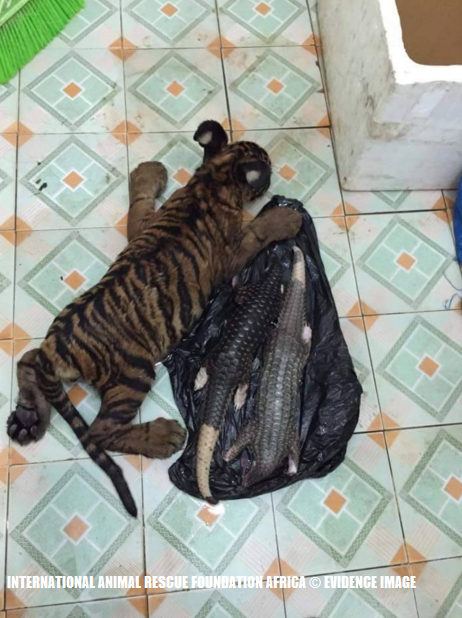
Illegal wildlife traders: Viet Nam & Thailand. Tiger cub was beaten over the head with Asian pangolins for the production of tiger and pangolin wine.
Back in June the External Affairs unit contacted the two men who’s names we’ve withheld in the hope to set up a deal to purchase rhino horn. Only one horn was available to purchase priced at $35,000 Vietnamese Dollars per/kilo. The horn had already been inspected by our Singapore counterpart that works closely within the trade circle.
The EAD officers then went ahead for the meeting of which as explained the two individuals didn’t turn up. Fortunately as explained we’ve managed to locate the two individuals again, this time though as you can see above and below, the two (possibly three individuals) have been rather busy since June 2015 (and way before they even cropped up on our radar). Some of the rhino horns can be viewed below along with ivory that is most certainly not permitted to be in the hands of these young men and women.
On locating further evidence that we required to instigate a multinational investigation we then again at 09:25am on the 23rd December 2015 and 29th December with a further communication on the 30th December 2015 communicated all (cyber evidence) and data to the Environmental Investigations Unit of Interpol via secure encryption. (Please note that are unable to provide all evidence onto this platform as it could/will impede on the investigation that is currently now ‘active’.
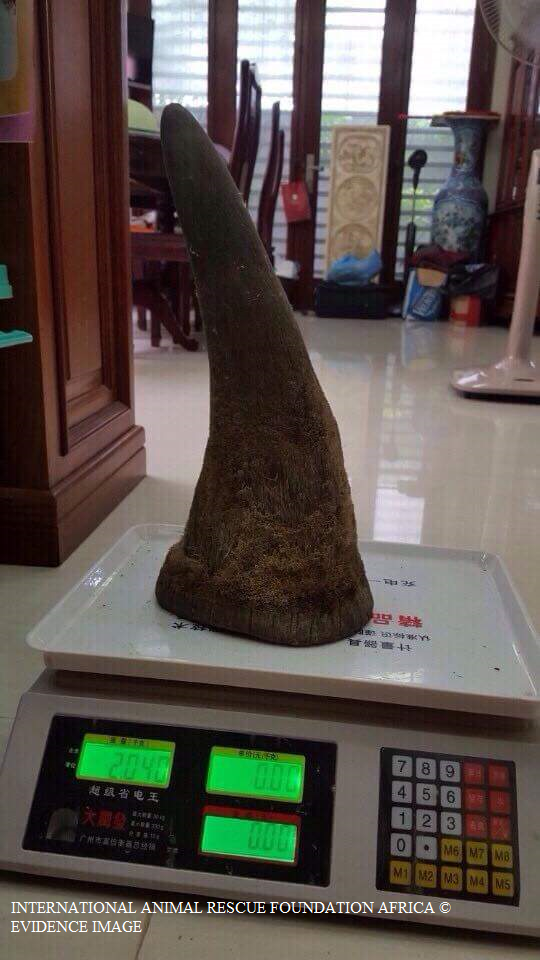
Trader weighs up a mature African rhino horn in back room. Total number of horns are worth in excess of 6 million euros.
Ivory trade was officially banned internationally back in 1989, however it hasn’t stopped these two rather sadistic and ruthless criminals from going about their trade bringing in millions of Vietnamese and Thailand dollars, most of which is traded on the US Facebook social media platform.
Furthermore it explains now where the vast majority of ivory and rhino horn is being traded. Viet Nam was virtually declared a no-rhino horn country by the BBC and the WWF back in 2014 as explained above. Unfortunately had the two investigations units bothered to look a little closer they’d have not only noticed our own concerns (with evidence being shown), but also many private online forums (including Facebook) booming in animal parts trade.
Below are numerous pieces of ivory all of which are not permitted. Investigate officers casually asked within the online chat forum if the ivory below was permitted, the [unnamed trader/peddler] was very forthcoming with his reply stating; “No, none of the ivory here is permitted”, meaning its 100% illegal to own/trade.
On immediately being made aware that the ivory was not permitted we knew instantly that these three individuals were not your average wildlife traders or syndicates. Furthermore on tracing the individuals Facebook profiles we were yet again (as explained) made aware of a female ivory trader that has been visiting Australia and Japan for unknown reasons while trading ivory online. Mrs Chung as we know her we’ve already informed the Australian Federal Police and TRAFFIC about.
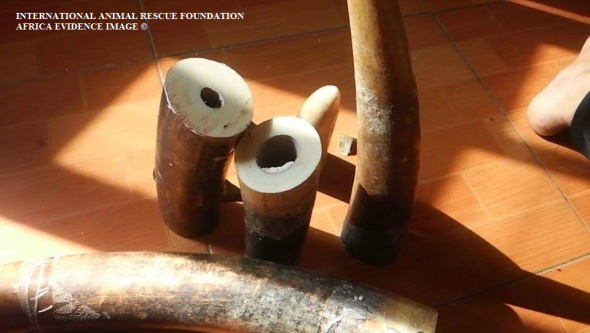
Female trader with male brags to investigative officer how ivory is easily obtainable from Benin via France.
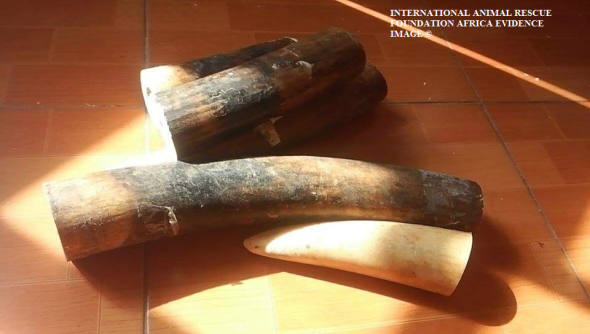
Trader informs investigate officer that ivory can be shipped into any county in the form of small firewood blocks.
The images above are just a small handful of evidence shots obtained from both the Vietnamese and Thai traders that had no worries whatsoever on displaying these items either to our investigative officers, or trading online via secure trading chatter rooms. These chatter room’s are mainly frequented by medicine men and women, and general traders of antique and non-permitted animal parts, all of which anyone can enter on Google using a simple VPN tool.
While ivory trade is not necessarily a big secret within Thailand, the sheer fact that younger people are able to obtain ivory and rhino horn in such mass quantities is extremely concerning. We also have reason to believe that some of the ivory is deriving from passages via Benin and possibly Cameroon on the continent of Africa. Our enquirers in relation to the African trail of ivory into Asia began with Mr Chan**** ***** who states he works for the Homme D’Affaire International which we believe is a made up organisation.
Chan**** *** runs a bush meat shop within Cameroon selling anything from pangolins to endangered turtles, masks and cars, and coincidentally his shop is also operational on Facebook. Had Mr Chan**** *** not bragged about ivory making its way from Benin into Vietnam we’d never have caught up again with our Asian fiends. Some of the images from Ch**** *** bush meat shop of horrors can be viewed below.
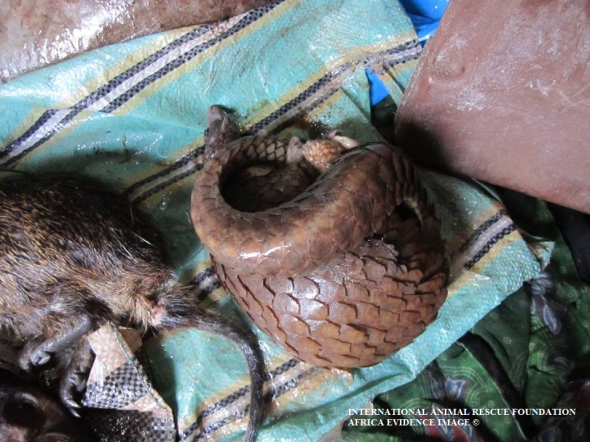
Investigators identified two species of pangolin. Both tie into the Asian and African wildlife traders.
E.A.D officers investigated the trade between the two African and Asiatic pangolins, above is that of an African pangolin which was the same species seen within the apartment of the Vietnamese citizen that offered our Singapore investigative officer rhino horn. So we’re 99% positive that all three Asian citizens have more than your normal ties to the African bush meat poacher whom we know is using a trade route from both Benin and Cameroon, onto Europe and into Asia. The African pangolin 1 of 3 identified in the apartment in Vietnam can be seen below.
African and Asian pangolins are fast becoming rare with the vast majority of Asiatic pangolins now nearing extinction. Pangolins are used within the Asian and African (TCM) Traditional Chinese Medicine trade. Furthermore the scales of the pangolins are used to make jewelry or coats. The meat of pangolins is considered a delicacy. Every year we loose more and more pangolins to poaching, and while the Asian pangolin continues to decrease in population size, the African pangolin will be placed more at risk furthermore.
Investigators were more shocked at the sheer fact that three young adults were able to obtain large quantities of illegal and legal wildlife products then freely trade them on the streets or upon their personal Facebook profile shop forums. The images below depicts large quantities of tiger teeth, bear paws, shark fin and what we believe to be tiger testicles.
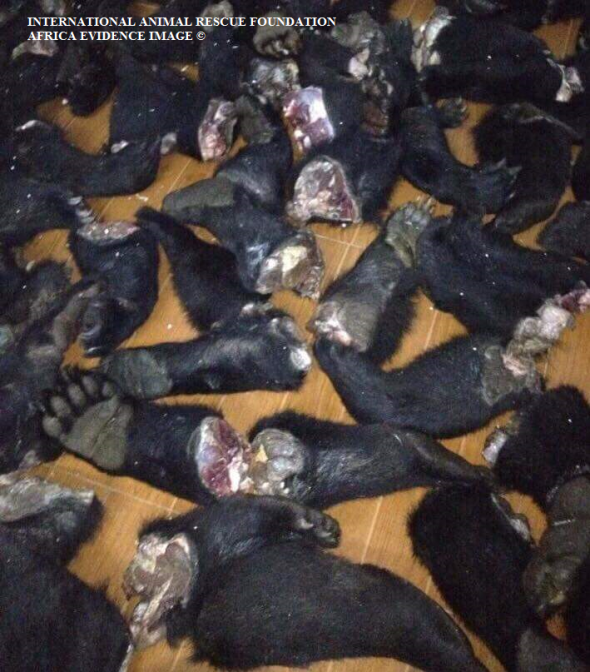
Thai and Vietnam traders offered investigators bear paw, that is used to create a fake medicine soup.
The following images below are from tigers that our International Animal Rescue Foundation Asian unit have successfully identified as Sumatran tigers listed as critically endangered on the IUCN - International Union for the Conservation of Nature’s Red List.
Please note you may find some of the images below disturbing and emotionally upsetting.
Investigative officers were told that tigers are bred within small enclosures within the family home. From there the young cubs are then killed with the adults soon after. There body parts are either stored in a freezer whole, or decapitated. On mentioning tiger skins the EAD officers were informed that some of the tigers are skinned of which their pelts can fetch anything in the region of $5,000 to $10,000 USD. Needless to say we were mortified and shocked at the traders openness and complete disregard to the fact tigers are nearing extinction within the wild.
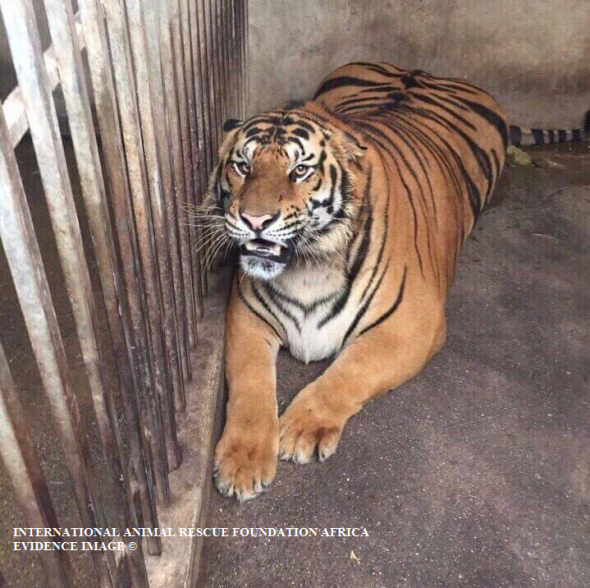
One of nine tigers that both the Thai and Vietnamese traders keep as pets. Sadly to later breed and kill for parts.
The tiger pictured above was being kept as a pet in a dark barred cage in Thailand, Bangkok. We personally believe that the three traders we’ve been monitoring since June 2015 have traded more than nine tigers (if not more). Based on the number of tiger teeth and claws we’ve estimated a probable 20-30 tigers have unfortunately met a rather gruesome and barbaric death, the sheer number of skulls, pelts, teeth, claws and tiger male testicles shows these traders are more than professional. The following images below may be upsetting to some viewers.
Despite the best attempts of law enforcement around the globe, CITES and national NGO’s pushing for stronger laws internationally and locally very little in demand and trade is being seen relating to tigers. A six month investigation of illicit wildlife trade has shown to us that trade is becoming more widespread, younger people are more involved rather than the elder generation. Regardless of education and awareness in schools the E.A.D are now picking up on average a total of 3-4 teenage dealers weekly. Many of them have ties to African bush meat traders too.
As previously explained Asiatic pangolins are nearing extinction, yet despite the amount of seizures being made, little in the way of a decrease in trade is being witnessed. Furthermore as Asian pangolin populations decreases, African pangolins will be poached to continue the trade and demand of pangolin meat, scales and medicine. None of which has any medicinal value whatsoever.
The images below were what prompted E.A.D investigative officers to then look further afield, taking the team from Thailand and Viet Nam to Africa.
From 2010 the External Affairs Department have noticed a staggering increase of tiger teeth and claws on sale via the Social Media platform identified as Facebook. There are two different types of trade. 1. Counterfeit trade which is primarily wooden carved tiger teeth and claws and 2. Real tiger teeth and claws. Like all of the evidence above and below obtained by the EAD’s Operation Trojan Horse officers, every part of the tiger is used for illegal trade.
Tiger teeth and claw necklaces are worn in Asia in the belief that such animal parts will bring the wearer power, good-luck, and ferocity. Many of the traders that we investigate often tell us that they have either found tiger teeth and claws on the ground in forests, purchased antique tiger teeth and claws from dealers. Or in this case have illegally harvested the tiger teeth and claws from home-captive bred tigers seen in the images below. The images below form part of the evidence files on the three individuals spanning from Thailand to Viet Nam.
(Please be warned the following images may be upsetting to some viewers).
Below are step by step guides that the Vietnamese trader bragged to E.A.D officers on how to harvest tiger teeth and claws. The images are upsetting and also include the skinning of tigers.
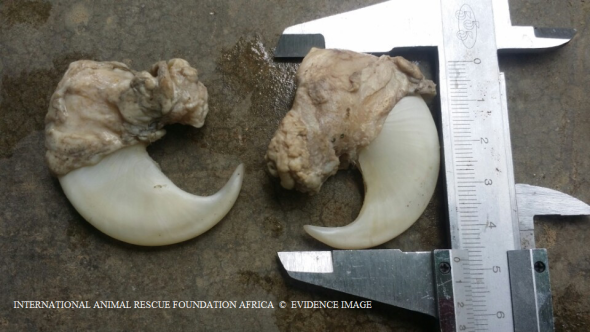
Tiger claws are measured like rhino horn and ivory. This process helps traders to price up and show legitimacy to buyers.
E.A.D officers are (as explained) unsure on the exact number of tigers that these individuals in question are breeding and trading within the home and other premises. From the evidence obtained the number of teeth and claws points to at least 20-30 tigers bred, killed and processed in Thailand and Viet Nam. An unidentified trader who’s name we cannot make public proudly shows on their Facebook page how easy it is to skin a tiger (images seen below).
Tiger testicles are also used within the Traditional Chinese Medicine trade, however this is the first time we ourselves have actually come across such tiger testicle trade (normally one views tiger penis on sale real and counterfeit). The trader[s] we’ve been investigating boasted within an online forum how tiger testicles are now more popular than tiger penis itself.
The image below shows the trader boasting how large the male tiger testicles are before he then sets about to remove, bag and weigh up the testicles for sale. Its believed the testicles ‘may’ be transported illegally into China or onto wealthy Viet Nam/Chinese restaurants where the soup of tiger testicles is ‘allegedly’ known as a delicacy and (aphrodisiac soup). None of which holds any medicinal evidence whatsoever.
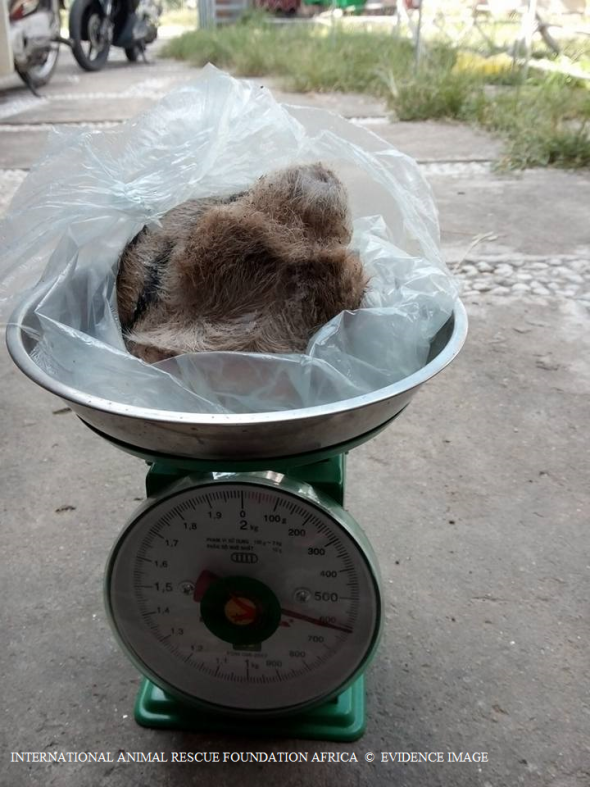
Tiger (testicles) weighed for sale. The testicles will most likely be used to produce tiger testicle soup.
Back in 2013 the Humane Society of the United States stated a total of twenty seven countries had outlawed the sale and trade of shark-fin for the production of shark-fin soup. One would then be led to believe that since this mass outlawing and bans on trade, it would therefore heavily restrict shark poaching and trade of shark-fin soup. In Thailand and Viet Nam it appears not to be the case (both countries have no bans in place).
Unfortunately when E.A.D officers investigated the traders herein this article, we uncovered more than enough shark-fin trade to prove that neither laws or outlawing of the trade is having any real effect on stopping or restricting the trade of shark-fin. On speaking to the unnamed trader within a forum online for TCM trade, the individual boasted how easy it was to obtain shark fin, an transport that into Asian and North American countries. The images below show shark-fins drying at the traders apartment in Thailand and Vietnam.
International Animal Rescue Foundation Africa and two investigation units aligned with us; External Affairs Unit and Operation Trojan Horse (Cyber Crimes Division) have been tracking countless illegal wildlife traders all over the world since IARFA established the (Cyber Crimes Unit). While the evidence above may shock many, its little compared to what we locate every month. Investigative officers work under immense pressure, stress and must work fast to ensure that traders once located are reported to the relevant agencies.
On the 23rd December 2015 Interpol’s Environmental Crime Unit and the Cyber Crimes Serious Investigation Team were alerted to our findings, while we can state now that our investigation which we have decided to make public has shown much data on trade. The investigation is considered normal due to the size. The most shocking aspect of this investigation was the fact that our younger generation are more active now within this illicit trade. That in itself poses some rather large problems and concerns, and one that now needs addressing at both government and educational level.
As of today 29th December 2015 this investigation has since been increased to “extremely urgent”, and the need to locate these men and women is critical before any further animals die, in Asia and Africa. All three individuals have shown a complete disregard to the fact rhino’s, elephants and tiger populations are losing ground throughout the Asian and African continent. Sharks and pangolins are also nearing extinction too. Trade and demand as explained has skyrocketed online to worrying levels, yet slowly vanishing on the ground.
Thailand is the new hub for rhino horn trade and Facebook and other social media platforms are being exploited to trade just about anything wildlife, regardless of such products being illegal. Trade and demand on the ground has also changed from elder to younger individuals (as explained) which is very worrying. One of the largest trading countries that we are seeing to date, is that of Thailand, which would explain why the BBC back in 2014 couldn’t locate much in the way of rhino horn (in Viet Nam).
Since General Prayut Chan-o-cha took over running of Thailand back in 2014 wildlife trade has skyrocketed. While we cannot prove increasing trade has anything to do with General Prayut Chan-o-cha, it just seems too coincidental that a sudden spike of rhino horn, ivory and other wildlife products has shot through the roof.
Facebook was where this investigation ended prompting us to then send all evidence to Interpol. Facebook hosts some 1.32 billion users worldwide, 32% of which use cell phones to login into the United States platform, thus making it difficult to locate traders and dealers.
International Animal Rescue Foundation Africa have been lobbying Facebook since the start of the year, to implement new terms and conditions to heavily disrupt this trade and demand. A petition that has amassed over five thousand signatures can be signed here and shared. However we’re not holding our breath. Should the Facebook platform and its CEO Mark Zukerburger not implement new polices on trade and demand of illicit wildlife products we will unfortunately soon see many species of animals pushed into extinction. Ivory and rhino horn trade has exploded to worrying new levels. Rhinos, elephants and tigers are being poached moreover, and the internet as well as ground trade is awash with anything from drugs, firearms, child trafficking (most of which links back to illegal wildlife trade).
One of the men that is pictured above is responsible for the trade of wildlife parts above, he has since been reported to Interpol along with his partner and other associates whom we have been investigating since June-December 2015. The individual above is believed to be in Hanoi (Nguyen), or Ho Chi Minh City, possibly with an accomplice. His name and other accomplices we cannot make public as yet. The image is recent.
A more closer image of the individual and the female is located below. We believe based on evidence obtained that the male is using the females account on Facebook too.
May this be a stark warning to all wildlife traders out-there. International Animal Rescue Foundation, External Affairs and Operation Trojan Horse will eventually catch up with you. If we catch you trading in wildlife products we will monitor you on the ground and online. From there we will press for your arrest and detention.
Within the past year Interpol has been escalating their new project identified as OPERATION WORTHY II Operation Worthy is targeting many individuals involved in international and local serious crime.
Updates on this case will follow as and when we’re updated. Thank you for reading.
Chief Environmental Officer (CEO)
Director
info@international-animalrescue-foundation.org.uk
If you would like to make a small donation to our organisations investigations department please click the link >here< Your donation funds 10% of our environmental projects, while we ‘self fund’ the remainder 90%. Please contact us via the email above for further information. You are not at liberty to donate, nor do we beg.
“REPORT WILDLIFE CRIME TODAY”
Licence to Kill - Welcome to the Future of Conservation.
Rhino and elephant poaching on the African continent has again raged out of control this year, and as we near the end of 2014 statistical data shows that near to 1200 rhinoceros have been poached for fake medicine and thousands more elephants killed for meat and their ivory. Its expected by the end of 2014 we will have lost some 1400 rhino. Data models have also shown that by the end of 2015 we look set to loose a staggering 2,009 rhinos with thousands more elephants too.
The poaching pandemic within South Africa custodian to the worlds largest populations of Rhinoceros isn’t decreasing, nor are any forms of anti poaching actively working to at least stem the poaching rate. From 2010 we lost 333 rhinoceros of which some 165 people were arrested. 2011 poaching and arrest statistics increased again that saw some 448 rhino butchered and 282 poachers arrested. From 2012 poaching statistics shot up yet again seeing some 668 rhinoceros killed and 297 people suspected or known to have poached arrested. 2013 over 1004 rhino were slaughtered of which a further 298 people suspected of poaching were arrested.
Statistics for 2014 to date place arrest rates at some 344 with some 1100 rhinoceros bludgeoned to death to provide the Asian medicine market with fake medicinal cures and to show wealth among the rich within the countries of Viet Nam, Laos, China and Thailand.
India has had its fair share of poaching too although poachers do play Russian roulette when they wish to poach rhinos, tigers or elephants within the Indian national parks. Statistics show some 37 one horned rhinoceros poached since the start of the year which is a little over last years poaching records. Arrest rates are up that see some 45 people arrested. Deaths of poachers has increased from last years statistics that was 5 poachers killed compared to this years kill rate that stands at 27 poachers killed within the national parks of India.
Please note the Rhino poaching stats for 2014 are incorrect - to date over 30 Rhinos have since been poached.
While arrest rates are increasing within South Africa [see pic below] with regards to rhino poaching very few poachers are actually brought before the courts with many given bail just to commit the same offence again or flee back over the border from which they remain untouchable just to re-offend again.
Back in early December 2014 International Animal Rescue Foundation Africa and India launched a public debate focusing on [Shoot to Kill] - a method of wildlife preservation now active in the majority of wildlife parks in India that sends a clear and precise message to poachers - yet within South Africa is barely practiced as rangers and farm security either face red tape court and legal action or haven’t even the weapons to shoot to defend or kill poachers. Red tape or legal action is not seen within the states of India where a one shot to kill poachers has been authorized.
Kaziranga National Park hosts plenty of tigers being the worlds highest density and fleets of endangered one-horned rhinos. (More than two-thirds of the remaining population.) And, since 2010 a take-no-prisoners anti-poaching policy that allows rangers to shoot on sight. Welcome to the future of conservation.
Indian wildlife poacher Naren Pegu briefly became famous back in 2010 with regards to the Indian shoot to kill policy. Poacher Naren Pegu was shot dead on the morning of December 13th 2010 after anti poachers could take no more. Naren Pegu had decimated many rhino and tiger populations making thousands from animals parts and providing an illicit trade to South East Asia.
Time to Get Tough on Poaching;
The fall of India’s most notorious poacher.
Pegu was a member of the Mishing tribe, one of Assam’s many indigenous groups that, like their equivalents everywhere, have lost land and livelihoods. Mishing villages line the park boundary, their inhabitants pressed against it like kids at a candy-store window. If you can’t pay $50 for a jeep safari, you can’t get inside. Growing up here, Pegu learned to sneak past the border; he knew the park like his own backyard. He’d come and go undetected by the forest guards—India’s version of wildlife rangers. Poaching ran in Pegu’s family; his father was a poacher before him. In all due respects Pegu was “allegedly” poaching to provide a stable income for his family of which poachers within Africa of which some opportunistic poachers are merely doing the same. If countries such as Viet Nam, Laos and China were not using tiger, rhino and other animal parts for trade its most likely that Pegu and his family members would either have to resort to other violent crime to feed and provide income to family members or die from extreme poverty.
Most Mishing involved in the trade are content to serve as illegal guides for the bigger regional guns—sharpshooters and brokers from Nagaland—whom they lead in and out of the vast park, taking a small cut. But Naren Pegu was enterprising. He taught himself the rules of the trade, cutting deals in seedy hotels. Learned where to get black-market .303 rifles from the separatists who control the Nagaland hills. He thought big. Typically, poachers blow any money they come into, but not Pegu: he’d saved enough to invest in three vehicles, a big house, even a plot of land, where he was starting his own tea garden in some sort of psychological stab at legitimacy. While Pegu was bringing down more than $20,000 per year through poaching, his Mishing relations scrabbled to earn $200 a year in the rice paddies.
Pegu had every right to feel cocky as he and an accomplice slipped into Kaziranga on the evening of December 12, waiting out the night munching on rotis and precooked rice; a fire would have given them away. At dawn, rhinos scatter across Kaziranga to feed on the rich grasslands, and Pegu was ready. He came upon a mother rhino feeding with her calf. Got out his rifle. Shooting a rhino is like shooting a barn: when you take aim, they stop and stare, deciding whether to charge. Pegu shot the mother dead, hacked off her horn, and left the baby standing there. The park border, his village, and a payday in Nagaland were not far away.
Pegu should have been home free. He knew the landscape, and Kaziranga employs only about 500 forest guards to cover more than 300 square miles of tall grass and jungle—on foot. What were their chances of finding him? Yet, unbeknownst to Pegu, before he even fired his shot three forest guards had entered the area, searching for him. As soon as he fired, they closed on the spot. Unlike most guards in most parks in India, they were armed. And they had license to kill.
Pegu saw the guards first and opened fire. Missed. The guards took cover. As the shooting continued, one guard calmly raised his antique .303 Lee Enfield rifle to his shoulder, lined up Pegu in his sights, and blew his head off.
Pegu’s accomplice was shot in the hip by another guard. An hour later, he, too, had died “from his injuries,” according to the park’s report. Pictures from that day show the two men lying on the forest floor. The accomplice has dried black blood around his eyes, nose, and ears. Pegu’s head is split open like a watermelon.
The photography we have on Pegu and his accomplice is to graphic to include within this article however one can Google it by searching in the Punjabi language.
Licence to Kill - Smack in the Face to South Africans…
Indian rangers and forestry guards are paid an extra allowance should they locate and shoot dead poachers. While some may not believe this is actually helping to deter poachers - it actually is. India has the lowest rhino poaching rate compared with Africa of which to date over 1100 South African rhinos have been poached dead this year alone [2014]. 91.74% of voters agreed this year that a shoot to kill policy should be drawn up within South Africa. 6.46% of people stated a shoot to kill policy should not be given to rangers while 1.73% stated they were unsure. Either way this is desperate times and desperate times calls for some serious defensive measures. No mater what legislation the South African government is bringing in - its not working, This year alone as explained over one thousand rhinos have been bludgeoned to death. Something has to give and now we know poachers are feeling somewhat afraid to enter Indian National Parks the same sense of fear must apply to African poachers that wish to rid Africa of rhinos and other large fauna.
India is quite a poor country however they take wildlife crime as serious. Back in 2012 In addition, the government in Maharashtra reserved a fund of 5 million rupees ($90,000), to be used to reward people who can give information about alleged poachers. This year alone within rhino and tiger reserves alone we have seen an increase of poachers being shot dead and government handing out cash rewards. We must also reiterate that India has stated no legal action will be brought against those whom kill poachers. So why the same practice is not being adopted within South Africa is quite baffling. Are certain government ministers in on the poaching?
Indian forestry teams mostly now print on how they have shot dead poachers - rather than arrest them. Back in November 2014 yet another shoot out entailed the seventh for that month that left two rhino poachers dead and yet another message sent to the poaching community that wildlife crime will not be tolerated. Sadly since November to December we’ve lost a further seven rhinos however a four poachers out of them seven incidents were shot dead.
The two poachers were killed in an encounter with forest guards [picture below] in the Kaziranga National Park, famed for its one-horned rhinoceros. Acting on a tip-off, forest guards spotted the duo in a forest area between Diffloo and Borbhag camp in Burapahar range in Nagaon district and an encounter ensued in which the poachers were killed, a senior forest official said. The forest guards also recovered a .303 rifle, eight live cartridges, seven empty cartridges, some foodstuff and a mobile handset. The slain poachers have since been identified and their bodies have been sent for postmortem. A total of 14 poachers have been killed this year in Kaziranga National Park.
Poachers had arrived into the park in search of the endangered one horned Rhinoceros.
While some may agree hunting the poachers is extreme, its unfortunately the only [extreme] method of preserving our wildlife. Human Rights Organisations have yet to really speak out on the issue however are monitoring the increasing death rate of poachers within India. Their argument is poachers are trying to support their families financially.
Tiger and rhino populations within India are at their lowest though and while still extant their presence brings in revenue from tourism which helps to secure parks, pay wages, and decrease poverty within areas that border the main rhino and tiger parks. So in all the government is trying its hardest not only to protect its wildlife but also impoverished communities. Taking Indian wildlife poacher Naren Pegu case to hand too - while some journalists have stated he was only poaching to secure his families welfare, the vast majority of money was being used to fund his lavish lifestyle. While Naren Pegu was funding his own way of life, meanwhile on the border of Kruger National Park, South Africa “poachers that derive from poverty stricken Mozambique” are living the life of Riley. Poaching African rhino and living off the funding that is generated from the sales of the cut down horn. It truly is disgusting and a complete smack in the face to all Africans.
In Western Mozambique a now not so tiny nor impoverished village named as Kabok is now known as Mozambique’s millionaires rhino row. Poverty stricken individuals that are [untouchable] have for the past several years been wandering over the non-secure South African-Mozambique border taking down rhinoceros left right and center. While many face arrest and in some rare cases have been short dead [when a shoot out occurs] the village is growing and so too is its greed for Kruger’s Rhino horn and the wealth such horn trade brings in. Mansions and new vehicles can clearly be seen along the border to the disgust of anti poaching units and rangers alike.
In neighboring South Africa, these mansions would be called matchboxes. Most are flat-roofed, single-storeyed structures. Some look similar to RDP houses [public housing]. But what separates these homes from the usual reed houses in Kabok is that they are made from brick.
This part of Mozambique is dirt poor and the remnants of the civil war scar the landscape and the psyche of the people. War amputees wander the dirt roads. The new Kabok has been built on the horns of the hundreds of rhinos slaughtered just kilometres away in Kruger National Park. It is not alone – there are other towns spread along the border that lines Kruger National Park. They are the staging posts for rhino poachers.
There was a time when the bordering Corumane Dam supplied the community with its main source of income – fishing. Now, under the silvery full moon, fishermen ferry poachers across the lake, rowing them up the Sabie River and dropping them close to the Kruger fence. In South Africa Kabok has long had the reputation of being a haven for robbers and hijackers who take refuge across the border. Rhino economics filters through the town, the anti-poaching officer explains. Everyone gets a piece of the pie, builders are paid to construct those houses. Spaza shops have sprung up, some built with rhino money. The funeral industry, it appears, gets its cut too. Mozambique has in the past year acknowledged rhino poaching as being a crime and is actively helping to reduce communities along the border of the Kruger National Park. Sadly while the Mozambique government have acknowledged rhino poaching its still seen as a misdemeanor offence rather than a punishable offence. In all this is a smack in the face to all South Africans and our wildlife too.
Rules of Engagement - African Rangers can Face Legal Action;
Member of the SANDF Anti Poaching Unit patrolling the Kruger National Park
While the Indian Government has actively authorized in tiger and rhino reserves a shoot to kill policy of which forest guards are immune from legal action, in South Africa the rules of engagement are somewhat more cloudy of which there have been few cases where rangers and Anti Poaching Operatives have faced the wrath of their own government taking legal action against them for protecting their own wildlife. Animal rights activists must also remember when screaming and shouting at conservation units to shoot poachers - there are rules that must be obeyed at all times. These very rules are what International Animal Rescue Foundation Africa are now going to challenge in the wake of last months rhino poaching statistics and intelligence that has pinpointed South Africa as being the next country to be hit hard by elephant poachers. Activists must also remember that the vast majority of South African Anti Poaching Units are just that and not members of SANDF - South African National Defense Force that have the capability and authorization to take a shot at poachers and are 99.9% of the time armed while many Anti Poaching Units that consist of volunteers and/or rangers are lacking basic equipment or in some cases one unit only has one shooter. Least forgetting do not have the authorization to just kill poachers.
Unlike soldiers in combat, rangers pursue criminals, not enemy combatants. Rangers enforce national laws and work under specified rules, and in South Africa and elsewhere, they’re permitted to fire only in self-defense. That need for restraint can be stressful, states the now retired Major Jooste. “Here’s this [ranger], tracking poachers in 45 degrees [Celsius, or 113 degrees Fahrenheit] for many days. He gets a sighting, but he cannot shoot at the person. He must now stalk the person.” Yet the thick bush hinders tracking. When the ranger finally finds his quarry, “then he must challenge the poacher. Only when that person picks up his rifle may he defend himself. And that is taxing.”
According to Jooste, in 2013 SANParks rangers engaged in 65 firefights, but they recorded 108 sightings of poachers. “Because we’re law abiding, they get away. Because they run away into the bush, [the poachers] have the advantage.”
In addition, when a ranger in South Africa kills a poacher, the ensuing police investigation puts pressure on the ranger and his or her family—even if the case is dismissed. “You’re on the defensive all along,” Jooste says. “You know that when you sight them, in a split second you’ll have to make a decision whether to defend yourself, and there will be consequences.”
The consequences can range from legal action from the poachers themselves or from families against rangers of which is time consuming, taxing on the already impoverished country and sees rangers time taken up in courts rather than where they should be operating - in the fields.
Murder - Rangers risk their lives in the fields for pittance;
“Many who become game rangers go into it knowing that the position goes with many dangers of wild animals, dehydration, irritating insects, never mind the poachers—and most are the type of tough personality that can handle the rigors of the job,” says Kevin Bewick, head of the Anti-Poaching Intelligence Group of Southern Africa.
A recent ranger recruitment drive for Virunga yielded 1,800 applicants for 112 spots, despite the high death toll in the park during the past decade. For many, the attraction is the promise of a job, but that’s not the only, or even the main, factor.
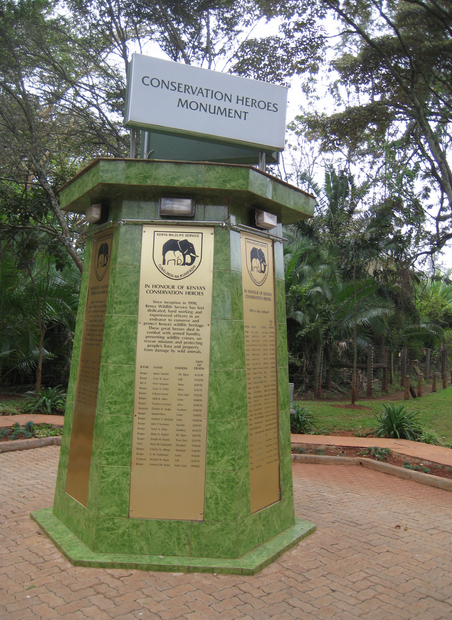
Picture above - KWS monument in honor of Kenyan Wildlife Rangers killed on active duty.
“Being a ranger was not a choice but a calling,” says Stephen Midzi, whose base is Shangoni Post in Kruger. “I was born for this, so had to fulfill what has already been written in my book of life.” Zakouma’s Ndotoingar says simply, “I’m proud of my work.” “Not a single guy has quit,” SANParks’ Jooste notes, adding that without the rangers like Midzi, poaching statistics would be a lot worse. “Look what would happen if we weren’t here.”
Every four days in Africa and around the world a ranger or Anti Poaching Operative is killed in their line of work. Many either face a quick death, are killed by contract shooters or tortured to death. The risks are endless yet wildlife security forces still risk their lives despite pittance [very little monetary income].
As explained International Animal Rescue Foundation Africa is challenging the South African government on shooting to defend of which the organisation wants a clear and precise “shoot to kill” law introduced for wildlife rangers and Anti Poachers not just SANDF. Furthermore I.A.R.F.A. calls on the government to not only authorize rangers to adopt this method of conservation but implement a NO conviction No Legal action clause within contract. Training and more equipment to be supplied to rangers too and rangers with no firearms to be equipped without delay.
International Animal Rescue Foundation Africa doesn’t stand alone either when it comes to such licence to kill policy. Over 90% of South Africans questioned agreed that a shoot to kill policy must be enforced to send a clear and precise message to poachers and king-pins that poaching will not be tolerated within the country. Should the organisation win it could see rangers in other countries authorized a licence to kill. Kenya is one such country on the continent of which KWS - [Kenyan Wildlife Service rangers] not only face death from poachers but are also heavily outnumbered by poachers that are slaughtering rhino and elephants.
The Peoples Verdict - Licence to Kill;
Back in November International Animal Rescue Foundation Africa and India started a public debate with regards to the shoot to kill policy. The debate has thus far seen quite a prolific response from which can be read below. Quite astonishingly we counted a mere dozen or more responses that were against the shoot to kill policy, whereas over 2,000 responses based from our Indian and South African debates called for a shoot to kill policy to be implemented.
Below is a handful of extracted responses for you all to read. You can join the debate by logging onto Facebook and clicking the link below. Alternatively you vote via our poll that will be the second third poll this year of which we will collect all results and begin passing these on to the government and ministries throughout Africa.
Roxanne Cochran stated - I am from South Africa. I agree fully with this notion. If they’re willing to take a life, they should be prepared to be shot down dead too. It’s very sad to see that most rhinos here have had there horns cut down for protection. It’s not natural and it breaks my heart that we have to go to such extremes to protect these beautiful creatures.
Gavin Hastings stated - Hello all, I am a serving soldier of the SANDF; I am just back from my 3rd deployment of 6 months from the Kruger. The problem id like to address is not man power or resources, it is the government of the country of South Africa and Mozambique who are now collaborating in the elimination of the species of rhino thanks to the bureaucratic impasse given to poachers of rhinos. As a soldier I am now “arresting” poachers. It is very difficult to maintain success and morale if you capture a person and he is extradited to re-do his killing the next week. I ask the international community to pressure my government. We need legislation to properly take care of the species survival and give the killers their fair due.
George Chimbai stated - In my country Malawi rhinos were once extincted and were re-introduced in the 1990s with rhinos from South Africa, without that Malawi wouldn’t have been boasting of having the BIG FIVE in its national parks and game reserves. South Africa as a supplier of endangered species to countries where they’re facing extinction I welcome and support the SHOOT TO KILL POLICY of these poachers.
Leisa Cope stated- I agree with shoot to kill only because I don’t see any other option. The consequences of killing animals not only brutally but into extinction needs to be this intense to at least make poachers think twice about what they are doing. If poachers choose to risk their lives then this is their own decision. How sad it is when it comes to this form of action.
Berdine Helderberg stated - Definitely shoot to kill - although, a warning shot might be needed first? (Legal wise..) Poachers know what they are doing, they know it is wrong and because they know they are untouchable, they continue committing these horrible horrible crimes. They simply do not care about the intense suffering of the animals and sometimes the babies too. If you can do it to a defenseless, helpless animal, you will do it to a human being too. Lastly, they will shoot any person that comes in their way, not thinking twice.
Kerryn Hay stated - Shoot to kill definitely. I have no sympathy for poachers even if they are disadvantaged/uneducated and trying to put food on table as some of you have argued - they are making the decision to brutally murder helpless animals and every action has consequences. Kill these criminals! why are we even considering giving them rights when animals have none. If it’s working in India then we must try it because nothing South Africa has done has helped thus far and time is running out while we debate the rights of ruthless criminals! I would prefer to see them die as slowly and painfully as the animals that they murder but let’s shoot to kill and make an example of them!
Heather Smith stated - These poachers are killing innocent animals, so why shouldn’t they expect the same treatment. Rangers are shooting to save these animals lives, poachers are shooting purely for money. You have my support all the way. Shoot to kill!!! Just as the poachers do.
Debbie Olivier stated - South Africa wake up! Allow our rangers to shoot to kill - no questions asked. We have entrusted our wildlife to them - we need to trust them with this too as they are well trained.
Donny De Mars stated - Why shouldn’t there be a shoot to kill law? I mean what makes you think these poachers would not do the same for any unarmed ranger who tries to bring them in. They are no better than drug traffickers and deserve even more severe punishment! A life for a life.
Robert Cates stated - I think a shoot to kill policy/law should be enacted not only to stop dead the ones doing it now, but also to SHOW/deter others thinking about doing it. I don’t think it should be even controlled by the police department… I think it should be an open season sort of policy… that should really put the scare in them.
Whoozie Blue Marlene stated - If you were running away from a bank having stolen a rare pink diamond the. The police would shoot you down dead. Are our rhinos not rare enough, aren’t they our beautiful pink diamonds?. Telling a poacher to stop or else does not work and if it does they are back in business chop chop. If this was installed it would work simply because no one wants to die. God left these animals in our care, so far the care has not been good enough I’m afraid. Protect our Rhino please because enough is enough !!
James Kipterem stated - I agree! Because rangers too are being targeted by these evil minded poachers. Even poachers, they have the same thought of “shoot to kill” whenever they meet rangers. So shoot to kill is the only remedy to a poacher, because, why break the law which we were passing together? that, ‘it is illegal to kill wild animals’. Instead of defending the law you break it. That is very bad. Always law defenders are more than breakers.
Jannette Slabbert stated - Any bad behavior must have real and costly consequences or you will never change it prison is obviously not enough of a penalty so if loosing your life is the price then so be it. It has proven effective in India then I say put the policy in SA too.
Russell Gordon stated - Future generation will blame us for not doing enough to have prevented the total extinction of the Rhino. So to address this now to preserve the Rhino for our future generations poachers and their ring leaders need to feel pain and by that I mean the ultimate sentence, the death penalty.
Laurian Knop stated - I vote shoot to kill poachers in self defense. Poachers are always armed and chose to kill the helpless and innocent. How many rangers have lost their lives to poachers? Self defense is not murder. Protecting those unable to defend themselves is not a criminal offense. Poachers are a scourge that need to be wiped out as they facilitate a bigger epidemic of terrorism, trafficking of drugs and children and general corruption. Why is this even being second-guessed? Do those opposed have something to lose should it be implemented?
Chris Switzer stated - I believe the continuity of a species, far outweighs any issues that might be brought up with regard to a shoot to kill policy. Poaching an endangered species, many of which on the brink of extinction, should be punishable by death.
Annmarie Botelho stated - I think that south Africa should have shoot to kill laws… if it keeps going the way it is we are going to lose are elephants and rhino …. it’s such a cruel trade and there really isn’t any need for it.
Gillian Curley stated - I don’t like the shoot to kill as the poachers are just doing what they are told to do and feed their families BUT something has to be done and if we can’t get the leaders and the buyers then yes sadly I agree to shoot to kill.
Marisol Davila stated - A policy of shoot to kill poachers will be a deterrent for the poaching business. Due to lax policies wildlife numbers are in the brink of extinction. Many economies depend on the tourism that wildlife attracts. Therefore, a harsh policy against poachers and their customers is key if any country wants to strengthen it’s economic survival in the long run. The message need to be loud and clear zero tolerance to poaching, no bits or ifs allow.
To take part in the debate that International Animal Rescue Foundation Africa is running you can comment by clicking here alternatively you can also hit the poll button below and tell us what you want. Please be aware that the poll expires one week from the date of this article of which we will not run another poll.
BEFORE voting please view the video below.
Conclusion;
International Animal Rescue Foundation Africa last year created data models that indicated their worst fears regarding wildlife poaching based on poaching deaths, natural deaths, gestation, deaths of unborn fetus, decreased populations of other larger fauna such as elephants and more. Model data has already shown that South Africa’s poaching rate will continue to increase and has provided very worrying numbers of final statistics supported by defense organisations working hard to stem the flow of poaching.
While none of us wants to see, read or hear of any living creature death - We must send a more stronger and decisive message into Asia and African poaching communities, and while tackling poaching is one thing we’ve also poverty to engage that will take the temptation away from individual opportunistic poachers that kill to fend for their families. Its these very communities that Asian traffickers and king-pins target as they know they are easy prey.
Look at it simply like this. If your living with no food, no electricity, no sanitation and require health support, are barely feeding your family or even yourself and living within a country that is doing little to decrease poverty then you will snap the chance up at anyone given moment to make money. Conservation organisations and leaders of Africa and world leaders must do more to decrease poverty around wildlife parks.
Failing this Data Models have shown that the white rhino will be verging near endangerment by 2017 of which the black rhino could be extinct in under five years within the wild [despite populations increasing]. Furthermore while the continent of Africa is still custodian to thousands of elephants, elephant populations are becoming more fragmented. Yesterday I.A.R.F.A reported a massive decline in South Sudan elephant populations that now stand at some 2,500. Giraffe populations are now at some 40,000 for the entire continent of Africa.
Bottom line is should Africa lose vast swathes of her wildlife then tourism will be affected too. Tourism brings in billions for the entire continent of Africa of which Africa’s wildlife is seen as the number one tourist attraction. A large number of countries depend on tourism for the economic growth. A recent study done for DFID concluded: “While poor countries only command a minority share of the international tourism market, tourism can make a significant contribution to their economies.
Eighty percent of the world’s poor (below US$1 a day) live in 12 countries. In 11 of these, tourism is significant and/or growing. Of the 100 or so poorest countries, tourism is significant (accounting for over 2% of GDP or 5% of exports) in almost half the low income countries and almost all the lower-middle income countries.” Using these same criteria and 1996 data, tourism is “significant” in an impressive number of African countries: Benin, Botswana, Burkina Faso, Cape Verde, Comoros, Djibouti, Eritrea, Ethiopia, Gambia, Ghana, Kenya, Madagascar, Mauritius, Namibia, Niger, Senegal, Sao Tome & Principe, Seychelles, Sierra Leone, South Africa, Swaziland, Tanzania, Togo, Uganda, Zimbabwe. Zambia and Mali just missed the cutoff in 1996.
According to the World Tourism Organization (WTO), Africa as a whole attracts just fewer than 4% of total world tourists and accounted for 2.0% of international tourism receipts in 1997. Of the Sub-Saharan countries, only South Africa is listed in the top forty tourism destinations worldwide, where it was 26th in 1997. The WTO calculated [1996] that Africa had just over 3% of world accommodation capacity (796,000 beds). The Africa region showed the strongest expansion in arrivals of any world region in 1997, up 8.1% over 1996. Furthermore, during the 1988-97 decade, Africa had an average annual growth of 7.2% in visitor arrivals, only slightly lower than East Asia/Pacific, which had the highest growth rate of all regions though from a much higher base than Africa. The average annual growth rate for tourist arrivals worldwide has averaged 5.0% for the past decade.
However - the number of tourists now arriving in SSA has grown over 300% since 1990, with 2012 marking a high of 33.8 million tourists who visited the region. Income generated from tourism has also climbed: Receipts from hotels, tours and other attractions in 2012 amounted to over US$36 billion and directly contributed just over 2.8% to the region’s GDP, according to the report issued by the World Bank back in 2013.
Wild animals are probably one of the first things people think of when asked about Africa. Seeing all the documentaries on television, we can only wonder and watch in awe as these mighty creatures roam the plains and jungles. Many are now protected in reserves and tourists can venture out on varying safaris to watch them in their nature habitats. What an incredible experience for both the amateur and professional photographer! Zambia holds the most natural of parks because the area is not accessible between November and March due to the waterways. Since the animals, plants, birds, and other natural elements are left alone, the area is truly spectacular when viewed each year after this rejuvenation period.
Safari rates as number four on many tour guide questionnaires when asking tourists why they wish to visit Africa. So in all if we continue to see such a vast decline in wildlife and lack of hard core enforcement we’ll most certainly see a copious decline in tourism revenue. I don’t need to explain what that will spell either.
International Animal Rescue Foundation has been challenged by only Humans Rights Christian Organisation of which stated we should not lobby or enforce a licence to kill poachers. All that can be said to the Human Rights players is that when there are no animals left, and revenue is seen as shrinking because of this then the Human Rights organisations can visit Africa and tackle more violent crime, lack of any employment, rape, murder, and more.
The time to act is now and not tomorrow. Stand by International Animal Rescue Foundation and help us enforce a shoot to kill policy within South Africa, Kenya and Tanzania.
Thanks
Board of Directors for External Affairs - Ead
Chief Executive Officer of Environmental Projects Africa - Michael L. Rooste
Chief Environmental Officer & CEO Dr Jose C Depre
Chief Environmental Registrar Europa - J. F. Williamson
External Affairs and Lead Investigation Officer - Vincent Van der spuy
externalaffairs@international-animalrescue-foundation.org.uk
You can help us by donating, to donate click the picture below that will take you to our donation application on Facebook. Alternatively you can donate to our communications site listed hereto at
www.international-animalrescue-foundation.org.uk
Fake Rhino Horn - Will fake trade pose a danger to regulated trade?
Counterfeit Rhino horn trade is big business within Africa and Asia of which poses a significant threat to any proposed legal Rhinoceros horn trade, regardless of what the pro trade lobby has suggested within online forums and meetings with governmental environmental agencies.
Within this article we look at just how big such trade is and whether it will actually threaten the proposed lifting of the still banned Rhino horn trade within South Africa.
Pro trade lobbyists believe that by flooding the market with genuine Rhino horn that such counterfeit trade will be diminished and should not pose any real significant threat to legal trade or increase poaching furthermore. Although the counterfeit trade is not really a major issue to any such proposed legal trade, criminals that want to make a quick buck regardless of any such trade being made legal will still continue peddling fake horn regardless of who the legitimate suppliers are. We are after all talking of “money making” here.
Rhino horn smugglers are now making very high quality fake horns, allowing unscrupulous hunters to sell the real horns at a huge mark-up to black market dealers for traditional medicine and status symbols.
The fake horns are made with top quality resins and look so authentic that they are almost impossible to distinguish from the real thing, a report presented July 2012 to members of the Convention on International Trade in Endangered Species (Cites) says. The report, presented to the convention’s standing committee in Geneva, says Cites officials have been alerted to the increasing involvement of “professional hunters in the illegal Rhino horn trade”. Yet hunters deny having any involvement within the trade whatsoever.
“Trophies are exported to hunters after a legal hunt, but once the hunters have received the trophies in their home countries, the original Rhino horns are removed from the trophies and replaced with fake horns.” This is rather interesting as since 2014, March our investigative unit the CICU has yet again viewed a staggering increase in what looks like real horns and fake horns online for sale.
Cites did not specify in which country the fake horns were being made and sold, but details in the report point to the possible involvement of either American or European hunters in the fake horn scam. In 2012, wildlife investigators in the US arrested several American and Vietnamese nationals in a major bust in several cities across the US following the seizure of numerous Rhino horns, some of which were suspected to have originated from legal Rhino hunts in SA and other parts of the continent.
There have also been a series of robberies from museums and private collections across Europe over the past two years in which the horns were stolen from mounted rhino head trophies.
“The fake horns were initially made with a mould and were relatively easy to identify, but recent reports from authorities indicate that fake horns encountered lately are made in high-quality resin with a density even higher than that of a real horn. “This makes visual identification, once fully mounted, extremely difficult.”
But Cites officials have now found a way to smoke out the culprits. “Fake horns can, however, be identified relatively easily by collecting and burning a small quantity of dust from the horn, which will deliver a distinctive smell indicating that it is not Rhinoceros horn.
“In the light of this new trend, it is of extreme importance that Cites parties should have adequate legislation and enforcement controls in place, to prevent horns that are part of legal exported trophies from being used for purposes other than hunting trophies, and to ensure that the trophies remain in possession of their owners.”
Another possible source of the fake horns could be in Vietnam, which has been implicated as the end destination of dozens of SA rhinos shot legally by Vietnamese poachers posing as bona fide trophy hunters. The report notes that Vietnamese authorities had pledged to conduct a stock-taking exercise to check whether SA Rhino trophy horns were still in the possession of Vietnamese hunters.
“It is vital for the authorities in Vietnam to conclude this activity as a matter of urgency and to investigate fully all incidents where trophies are no longer in possession of the hunters. Such follow-up investigations can provide important information on the identity of the driving force behind the trafficking of Rhino horn.”
People who no longer had their horn trophies should be able to tell investigators who the horns had be sold to.
While fake Rhino horn is fraudulent, there are numerous effective, viable and affordable substitutes for Rhino horn in traditional medicine, the use of which has been encouraged by government and traditional medicine authorities, and surveys indicate that most practitioners are adopting them. Consumer attitudes toward rhino horn as a medicine have been little studied (although research is underway in Viet Nam). In Japan, only 17% of nearly 1,200 people surveyed had heard of Rhino horn as a medicine, and just 1% said they had ever taken any.
Trade in counterfeit Rhino horn is not just problematic within Africa, Europe and Vietnam. Indian kingpins and traders have also devised ways in which to produce rather crude fake horn that has fooled buyers into purchasing leaving them out of pocket.
The standard advice to smell a Rhino horn to know if it is real or not has made con artists come up with fake substitutes made of wood and dry bamboo root with a little frog meat rubbed in for the authentic “odour”. In the clandestine world of Rhino horn smuggling, buyers are always in a hurry and usually go by the smell. And horn traders are making the most of it.
The “markets” are now flooded with these wooden horns and few can tell the real from the fake. A source in the forest department revealed the recipe: wood, dry bamboo root modified by using lac. “Meat of frogs and other animals is also rubbed on the fake horn to replicate the smell of a Rhino horn,” the source said.
The Rhino horn — which is in heavy demand in south Asian and middle-east countries — is prized for its supposedly aphrodisiac and unproven medicinal qualities. This alternative market came to light with the recovery of a fake rhino horn from Bokakhat town near Kaziranga National Park January 28th 2012. Two persons, Mrigangshu Kalita and Ajit Bora, were also apprehended from Bokakhat when they were about to strike a deal. Kalita, however, managed to give police the slip and escaped under cover of darkness. Bora hails from Garmurh in Bokakhat, while Kalita hails from Jorhat district and had been staying in a rented house in Bokakhat.
Acting on specific information, a team of forest officials set up a decoy and the duo were apprehended while they were waiting to meet a buyer. “We did not realise that the horn recovered from them was a fake one until we brought it to the forest range office and examined it,” a forest official said. “We are interrogating Ajit, more things will come to light,” he said.
Forest department sources said there has been a spurt in demand for Rhino horns in the international market recently. Assam has witnessed the death of 15 rhinos this year (2014). The last poaching incident took place last week of which two poachers were shot dead in a heavy battle.
The Telegraph had recently reported about a group of buyers from Bhutan camping at Mangoldoi town near Orang to buy the horn of a Rhino which was killed at the park on January 10 2012. A forest official, however, said the only positive side to the development is that buyers would now think twice before buying a Rhino horn from Assam.
Trading online;
International Animal Rescue Foundation’s CICU investigative teams located many peddlers online selling what is “believed” to be genuine horn and what appears to be wood crafted horn. The Convention on International Trade in Endangered Species of Wild Flora and Fauna seem non-to concerned that this trade “illegal” is quite clearly evident. What is more worrying though is that such a trade in counterfeit horn can have a serious detrimental effect on the proposed legalisation of real horn trade. Should fake trade hamper any legitimate trade then poaching will only increase if not rage completely out control leading to the extinction of our Rhinoceros within a matter of eight years if that.
Conservation Investigations Crime Unit located the following online - these traders are still actively selling wildlife parts ranging from Rhino horn, Elephant ivory, Tiger parts, Pangolins, Bear bile and skins from various mammals.
Mr Sidi Salem, Kafr El-Sheikh is selling below what appears to be crafted wooden Rhino horn for some £30,000 weighing in at an approximate 55 grams from the trading site dubizzle.com that is located wihtin Egypt. CICU department that runs Operation Trojan Horse has previously linked this area far north of Africa to rather large trade of ivory products. Late last year our investigative team located various “carvers” of which they are passed on various sums of ivory to be carved then smuggled into Saudi Arabia. From Saudi Arabia the parts are then smuggled into Eastern China.
A further trader is peddling what appears to be old (antique) Rhino horn from the classified site of be3weshtry.com one of many sites located within Egypt. The trader is a Yemeni man that is still trading from this site although there are no updated details. We cannot confirm if this is real or what may be counterfeit horn. Either way this trade is illegal and threatens any legitimate trade.
A third trader is peddling from another Egyptian site what he claims to be antique Rhino horn. On viewing such horn in great detail it appears more resin like rather than any real Rhino of which is clearly advertised. The site listed hereto is mmlkat-ala7jar.com has been under close observation by the CICU unit and EAD since 2012 of which is filled with many wildlife parts under the guise of “antique”.
International Animal Rescue Foundation Africa printed recently on a rather suspect Rhino horn that was up for sale below. The horn, quite clearly is not antique as has been suggested within the article. The trader is still peddling even though Interpol Environmental Crimes Unit have been informed. Furthermore what is more concerning whom is supplying this individual from Africa with Rhino horn? This particular article is somewhat outdated however the CICU and EAD montier sites regularly of which they have passed on intelligence of conversation and potential sales of wildlife trade to the Interpol’s Environmental Crime Unit.
The trader that goes by the name of Razzer Q uploaded this one particular horn back in 2008. Intelligence has shown that this trader is also peddling in counterfeit horn and still trading from this site.
A fifth trader that quite clearly goes to the lengths of advertising all contact details, email, and cell number has been peddling again what appears to be “fake” Rhino horn from Egypt. We cannot state if this is real or counterfeit however evidence of such fake and real Rhino horn trade within northern Africa is growing by the month. Please click on the picture below for more information.
Just to give you an insight into how crude traders and scammers are online and on the ground, the picture listed below is from a trader advertising within the Ukraine what they state is their “own Rhino horn”. If one researches you’ll actually view what these scammers are selling are horns that were confiscated by wildlife and environmental investigative authorities. The scammer[s] have simply uploaded the pictures then created a site of which they are trying to fool potential buyers into believing they are actually purchasing illegally from legitimate traders. Click the picture for more information below.
 Fake Rhino horn trade is vast and spans the entire globe. Scammers also pose a significant risk to any potential legalised trade just as much as those that are peddling resin made Rhino horn. Conservation Investigations Crime Unit located a staggering 385 advertisements alone just within South Africa trying to scam purchasers with fake advertisements. Photography within these advertisements we can easily trace to pictures of seized Rhino horn.
Fake Rhino horn trade is vast and spans the entire globe. Scammers also pose a significant risk to any potential legalised trade just as much as those that are peddling resin made Rhino horn. Conservation Investigations Crime Unit located a staggering 385 advertisements alone just within South Africa trying to scam purchasers with fake advertisements. Photography within these advertisements we can easily trace to pictures of seized Rhino horn.
A RECENT study in Vietnam, sponsored by the World Wildlife Fund (WWF), reveals that demand for Rhino horn may be much larger than previously thought. It shows that, in addition to consumers of Rhino horn, there is a large group of “intenders” — people who intend to buy Rhino horn when they can afford it. The study shows that Rhino horn is bought not just for traditional medical purposes, but also as a status symbol. Rapid growth in living standards means the number of people who could become consumers of rhino horn is potentially enormous.
These findings cast doubt on the viability of proposals, supported by the South African government, to introduce a legalised, regulated market in Rhino horn. Supporters of such an approach believe a regulated market offers a better chance for the survival of the world’s remaining Rhinos than a ban on all trade. They argue that a ban on trade has perverse consequences — it raises the price of horn and so increases the incentive for poachers. By contrast, this view suggests that legal sales of stockpiled Rhino horns, plus the dehorning of live Rhinos to sell their horns, would drive down prices, reducing the incentive to poach. This is of course not proven and as much as one tries to argue this point with the pro trade lobbyists their main response is more in the line “we have to give it a try at least”.
Concluding we have many avenues that have still yet to be exhausted by the South African Government that may or may not preserve the Rhinoceros, either way that MUST be tried and tested. We have to exhaust all our options before leaping forward into a trade that could potentially cause more harm than good. Rhino poaching is increasing of which for this year alone to date (2014) we have lost some 192 Rhino of which the majority are slaughtered within the Kruger National Park.
Counterfeit Rhino horn trade regardless of what any pro trade lobbyists state poses a significant threat to the any legal trade. Should trade be legalised and with vast evidence of “counterfeit and illegal” trade still online and on the ground will the legitimate trade actually decrease counterfeit trade and scams? International Animal Rescue Foundation Africa believes not. For example those that are merely wanting to make a few hundred thousand of which do not use Rhino horn will still continue to sell imitation Rhino horn to individual users that wish to purchase at a decreased selling price, this “type of trade” or “undercutting” is no different to the sales in illegally imported tobacco and liquor . The South African government will have to tread very carefully now and ensure that should they be given the go ahead to trade from Cites then the price will have to be right with “controlled and professional trade” practiced at all times. Corruption must be addressed as to the hundreds of thousands of imitation sellers and scammers online and on the ground dealt with. Rhino pseudo hunting must also be banned too. Evidence is quite clear that hunters and farmers are in on the fake and real horn trade. Cites and the Department of Environmental Affairs are more than aware of this yet fail to acknowledge the seriousness of this problem.
Rhinoceros horn is not medicine and has never been proven to cure any form of medical ailment within humans. Very high concentrations were experimented on within rodents and of which only showed a very small decline in temperatures induced by scientists. The evidence is below of which clearly shows Rhino horn containing natural ingredients that are commonly located within the human hair and fingernails, horse hoof, tortoise shell, and parakeet beek.
I will be writing more on this article in due course of which I will be going into more detail of such imitation trade and trades not related to Rhino horn that have been exploited costing the globes governments billions in lost revenue every year. Imitation trade and unregulated trade is rarely documented on within the public domain of which needs to be.
What I myself find rather concerning as the Chief General Director is the ease that my team can locate illegally traded Rhino horn, Elephant ivory and Tiger skins online within countries that have supposedly tight online security. Yes the majority of my team are multi-bilingual speakers it doesn’t take a rocket scientist to locate illegal activities. Furthermore I wish to express my concerns at the lack of policing and intelligence sharing from one government/policing authority to another. Lastly, we have documented time again on the increasing wildlife trade within Northern Africa I.e Egypt of which not one single arrest has been made with regards to the peddling of Rhino horn and Elephant ivory.
Chief Director General
info@international-animalrescue-foundation.org.uk

